It will only take you approximately 30 minutes to go through this content. However, for our planet, this duration represents billions of years.
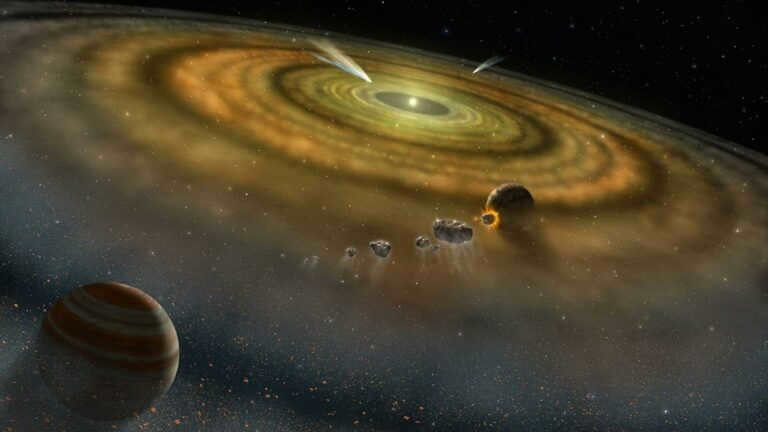
The origin of Earth
Let’s go back to the very beginning: 5 billion years ago. However, where is the magnificent blue planet? All we can observe is the recently formed Sun, surrounded by protoplanetary dust. Moving forward in time, we witness numerous rocks orbiting the Sun, gradually coming together through accretion. After millions of years, these rocks transform into at least a hundred planets revolving around the Sun.
Approximately 4.54 billion years ago, the Earth emerges. Surprisingly, during the early stages of its existence, life on our planet resembles its demise as portrayed in religious beliefs. There is hardly any solid land to be found. Instead, there exists a fiery sea of molten rock. The atmosphere consists of carbon dioxide, nitrogen, sulfur, and water vapor, replacing the air we know today.
During their time, religious scholars made calculations indicating that the Earth’s age is at least 6 thousand years. It wasn’t until the beginning of the 19th century that geologists began to speculate that our planet is actually quite ancient. They were aided in this realization by South Africa, where the remains of the oldest continental plate were preserved in one of its regions. Scientists came to the understanding that the rocks in this area are extremely old.
Equipped with data on the rate of material cooling, the concept that the Earth was originally a molten sphere, and years of calculations, Lord Kelvin, a British physicist and engineer, concluded in the 19th century that the Earth is likely between 20 and 40 million years old.
This was a significant breakthrough. However, for geologists in the field, even that number appeared insufficient. The duration of the scientific uncertainty would have remained unknown if not for the discovery by the young scientist Ernest Rutherford that our planet contains radioactive elements. These elements generate substantial amounts of heat, which fundamentally challenged Kelvin’s calculations. It was revealed that the Earth does not cool down gradually; instead, it harbors permanent sources of heat. Most importantly, the decay of radioactive elements enabled the precise calculation of the Earth’s age.
The Origin of the Moon
Several million years had elapsed (a mere infancy in planetary terms) since the birth of our planet, and it was already bracing itself for some rather significant challenges. Approaching us head-on was a youthful planet called Teia, roughly the size of Mars. Although Teia’s collision with Earth was fortunately averted, it was enough to transform both celestial bodies into molten spheres: massive waves of rock surged across Earth’s surface, while trillions of tons of debris were flung into the void of space. Miraculously, Earth managed to weather this cosmic catastrophe and emerged not only unscathed, but also adorned with a remarkable feature: the gravitational forces of our planet swiftly shaped the leftover debris into a magnificent ring.
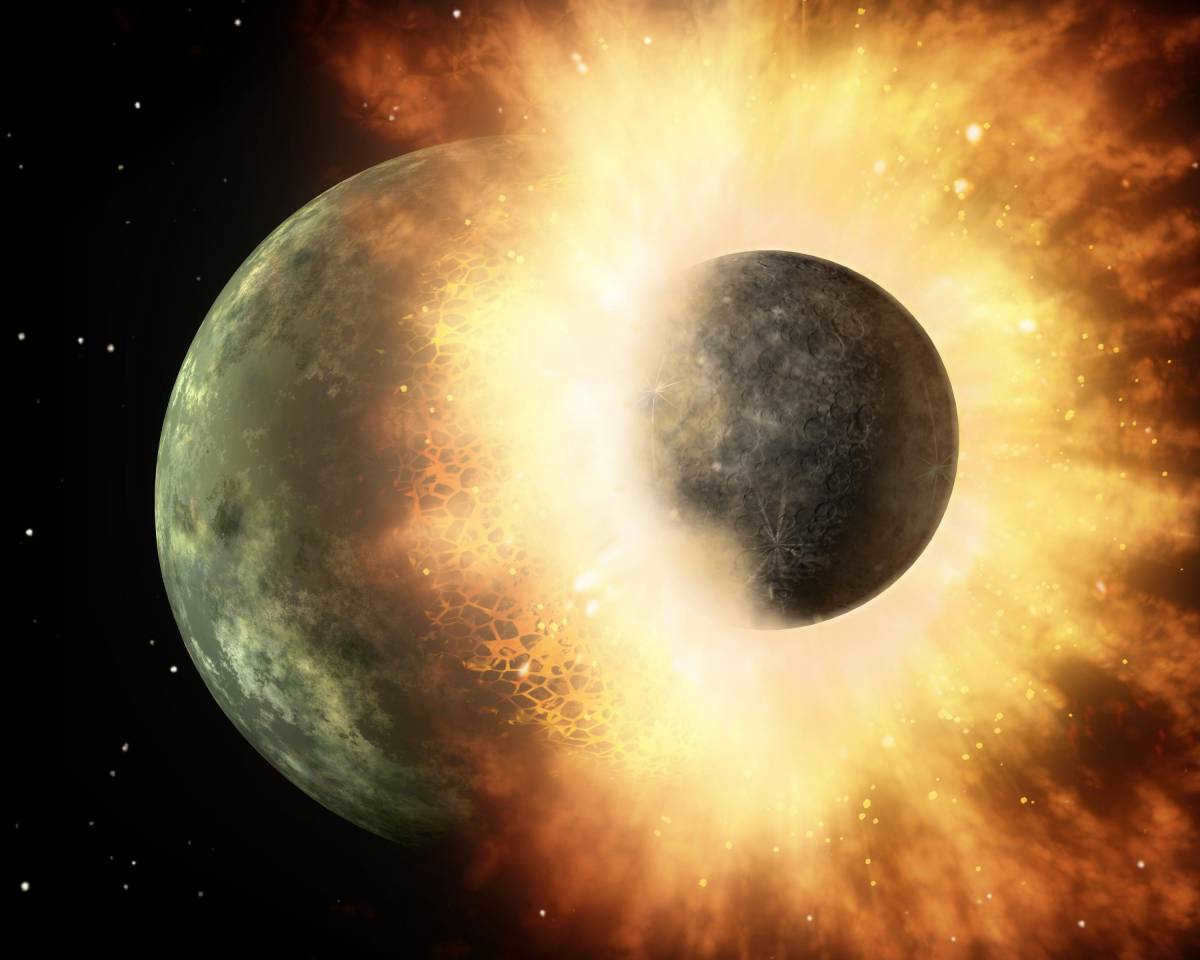
Meteorite Assault
The Earth endured a tumultuous early existence. Approximately 3.9 billion years ago, it was bombarded by remnants from the formation of the solar system. Many scientists speculate that these meteorites may have delivered water to the planet. Although each meteorite carries only a small amount of water, they have been bombarding our planet for over 20 million years. This relentless assault is gradually filling our planet with oceans. So, the next time you quench your thirst with refreshing, life-giving mineral water, take a moment to contemplate that every drop, every puddle on Earth, is billions of years old.
The center of the planet is still in a molten state, while the surface has cooled to a temperature of 70-80° C. Due to the Earth’s rapid rotation (with the Sun setting just 3 hours after dawn!), incredibly strong winds sweep across the planet. These winds surpass even the destructive force of the most powerful hurricanes we know today. Additionally, the massive gravitational pull from the nearby Moon creates enormous waves that traverse the planet. However, as time passes, the Moon gradually moves away, the waves subside, and the Earth’s rotation slows down.
Bacteria
3 billion 800 million years ago – the entire Earth was submerged in water. However, upon closer inspection, one can observe minuscule islands – these are molten rock formations, volcanoes erupting from the ocean. With time, these molten rocks will solidify, transforming into volcanic islands. Eventually, these islands will fuse together, giving rise to the very first continents. Nevertheless, during this period, the atmosphere remains toxic, and the intense heat makes it an inhospitable destination for vacationers.
Since the inception of the Earth, meteorites have been continuously bombarding its surface. However, 3 billion 800 million years ago, a more tumultuous phase unfolded. Evidently, something perturbed the trajectories of these meteorites, causing them to descend upon the Earth in a torrential downpour.
However, our planet did not endure in vain – the meteorites had already carried water here, but experts speculate that they also contained other valuable substances such as minerals, basic proteins, and amino acids. With the storms now subsided and the Earth having cooled, it is likely that these elements will play a significant role.
One widely accepted theory suggests that life on our planet first emerged near hydrothermal vents in the depths of the ocean. At these extreme depths where sunlight scarcely reaches and the temperature drops to just above freezing, underwater vents expel something resembling blue smoke. This “smoke” is actually hot liquid. Even at the ocean’s floor, seawater is able to seep through cracks in the crust, collecting gases and minerals along the way. The heated mixture is then discharged back into the ocean. There, it encounters a “broth” of minerals and chemicals left behind by meteorites.
Stromatolites
Approximately 3.5 billion years ago, a fascinating phenomenon occurred in the shallow ocean. What appeared to be ordinary rocks were actually conglomerates of living bacteria known as cyanobacterial communities. These bacterial mats, now known as stromatolites, played a crucial role in the Earth’s history. Through the process of photosynthesis, they converted sunlight and water into glucose, a simple form of sugar. This process also resulted in the release of oxygen as a by-product. Over millions of years, these seemingly unremarkable “rocks” had a profound impact, filling the oceans and atmosphere with oxygen. Without their contributions, it is highly likely that life on Earth, including ourselves, would not exist.
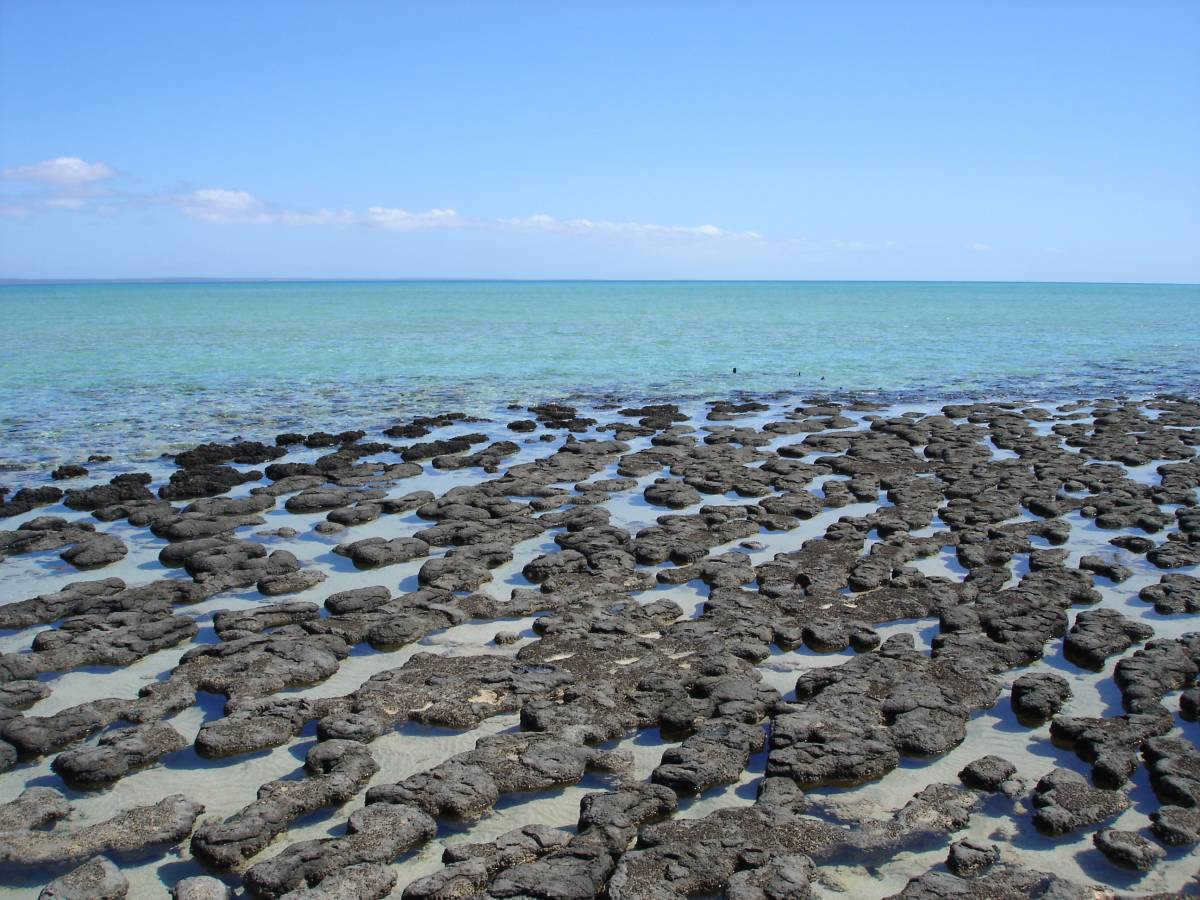
The Formation of Rodinia
Approximately 1.5 billion years ago, Rodinia, a supercontinent, began to take shape on Earth. During this time, a day on Earth lasted for a minimum of 16 hours. Despite the significant timespan of 3 billion years since the planet’s formation, complex organisms had not yet emerged.
However, the Earth’s core remains active and is actually hotter than the surface of the Sun. This immense heat causes the Earth’s crust to split, forming massive lithospheric plates. These plates constantly move, shifting the positions of oceans and islands as they collide with one another. As a result, around 1.1 billion years ago, a supercontinent known as Rodinia emerged. While Rodinia is widely recognized, it is believed that there was a previous hypothetical continent called Vaalbara, which existed from 3.6 to 2.8 billion years ago during the Archean era. Another theoretical supercontinent called Ur formed approximately 3 billion years ago. Although there may have been at least six supercontinents throughout history, we will only discuss the most well-known ones. Interestingly, many predictions suggest that in the future, around 200-300 million years from now, all of Earth’s continents will once again come together to form a single supercontinent. This future supercontinent has even been given a name – Pangaea Ultima, meaning “The Last Pangaea.”
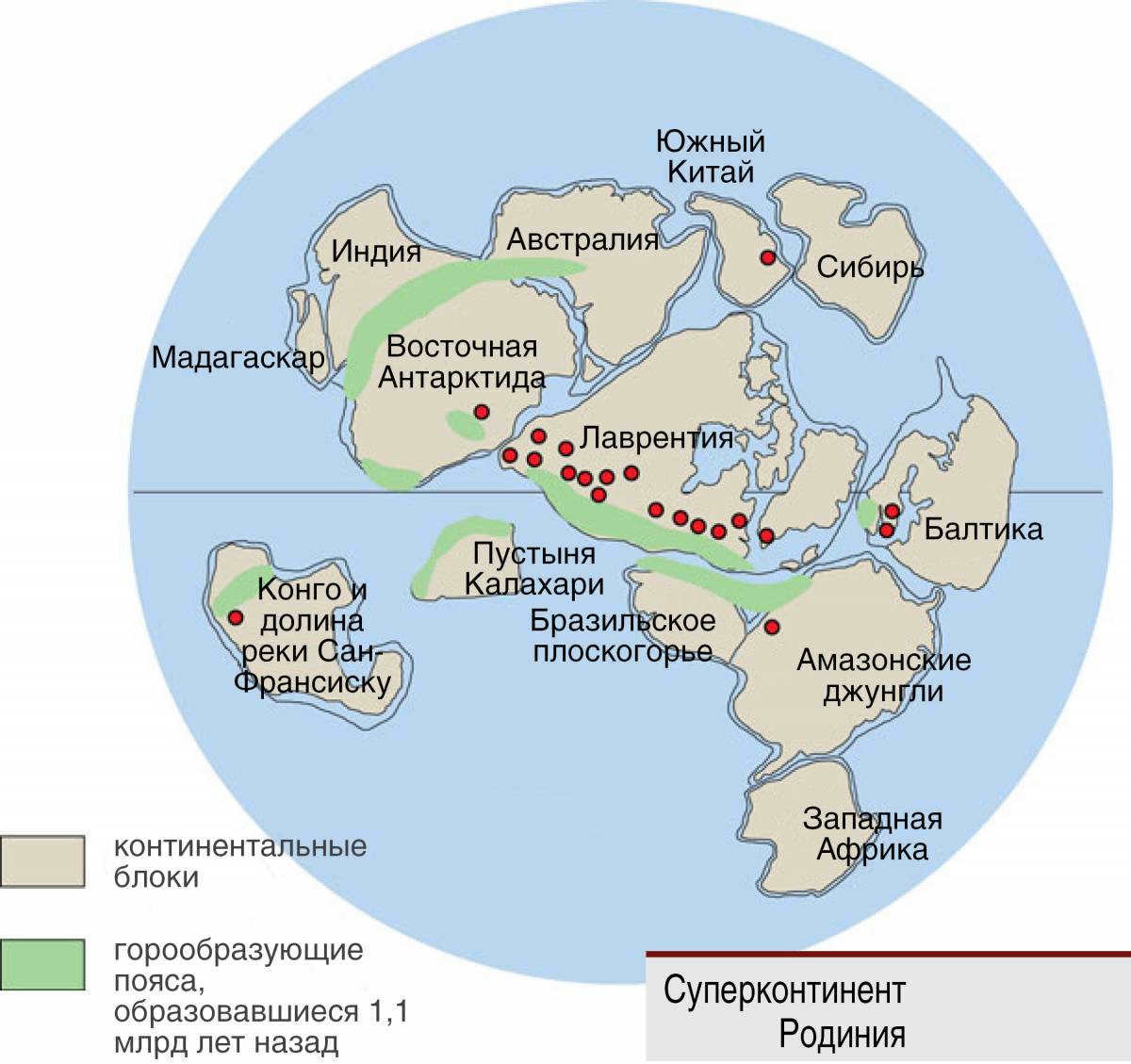
"Snowball Earth."
As a result of significant geological activity, a vast number of volcanoes emerged. The carbon dioxide they emitted mixed with water and transformed into acid rain. The rocks absorbed this rain, preventing its accumulation in the atmosphere and maintaining warmth. There are now more of these rocks than before, as they have been exposed due to continental collisions. Simultaneously, natural climate fluctuations and changes in solar radiation have caused the Earth to cool. The amount of greenhouse gas released into the atmosphere is insufficient to trap the Sun’s heat.
It is believed that the Earth experienced one of its longest and coldest ice ages in history. This era, known as the “Snowball Earth” era, is thought to have occurred during the Cryogenian and Ediacaran periods of the Neoproterozoic era, and potentially in other geological epochs as well.
The theory of the “Snowball Earth” era was developed to explain the presence of glacial sediments in tropical regions during the Cryogenian period, which occurred between 850 and 630 million years ago. Additionally, it seeks to explain other peculiar geological features from the same time period. However, there are some scientists who are skeptical of this hypothesis, arguing that such a massive glaciation would have been unlikely given the energy balance and global climate patterns.
The Cambrian explosion
Despite all odds, the planet remains a hotbed of activity beneath its icy surface. Hidden beneath layers of ice, volcanoes continue to thrive, rousing from their slumber one by one over time. However, as the rocks beneath the ice absorb carbon dioxide from these volcanic eruptions, the gas accumulates in the atmosphere, trapping the sun’s heat and gradually causing the glacier to melt. This melting ice gives rise to cracks, fractures, and irregularities in the Earth’s crust, creating even more volcanoes in the process. Through a chain of chemical reactions, the melting ice also releases vast quantities of oxygen that have been trapped within for countless millions of years. Additionally, the mounting heat leads to the fragmentation of Rodinia, a supercontinent that occurred approximately 750 million years ago.
The duration of the day is now approximately 22 hours, while the oxygen concentration in the atmosphere has reached unprecedented levels. It was during this period, around 540 million years ago, that the remarkable phenomenon known as the Cambrian Explosion took place, wherein a multitude of intricate marine organisms seemingly emerged out of thin air.
The Cambrian Explosion theory attempts to account for the abrupt appearance of animal fossils in the lower Cambrian and their absence in earlier sediments. However, recent research has revealed that numerous sophisticated animals, resembling modern species, emerged well before the onset of the Cambrian period. Nonetheless, it appears that the vast majority of contemporary forms initially emerged during the Cambrian. This phenomenon occurred at a remarkably rapid pace, likely influenced by an increase in oxygen levels, among other factors.
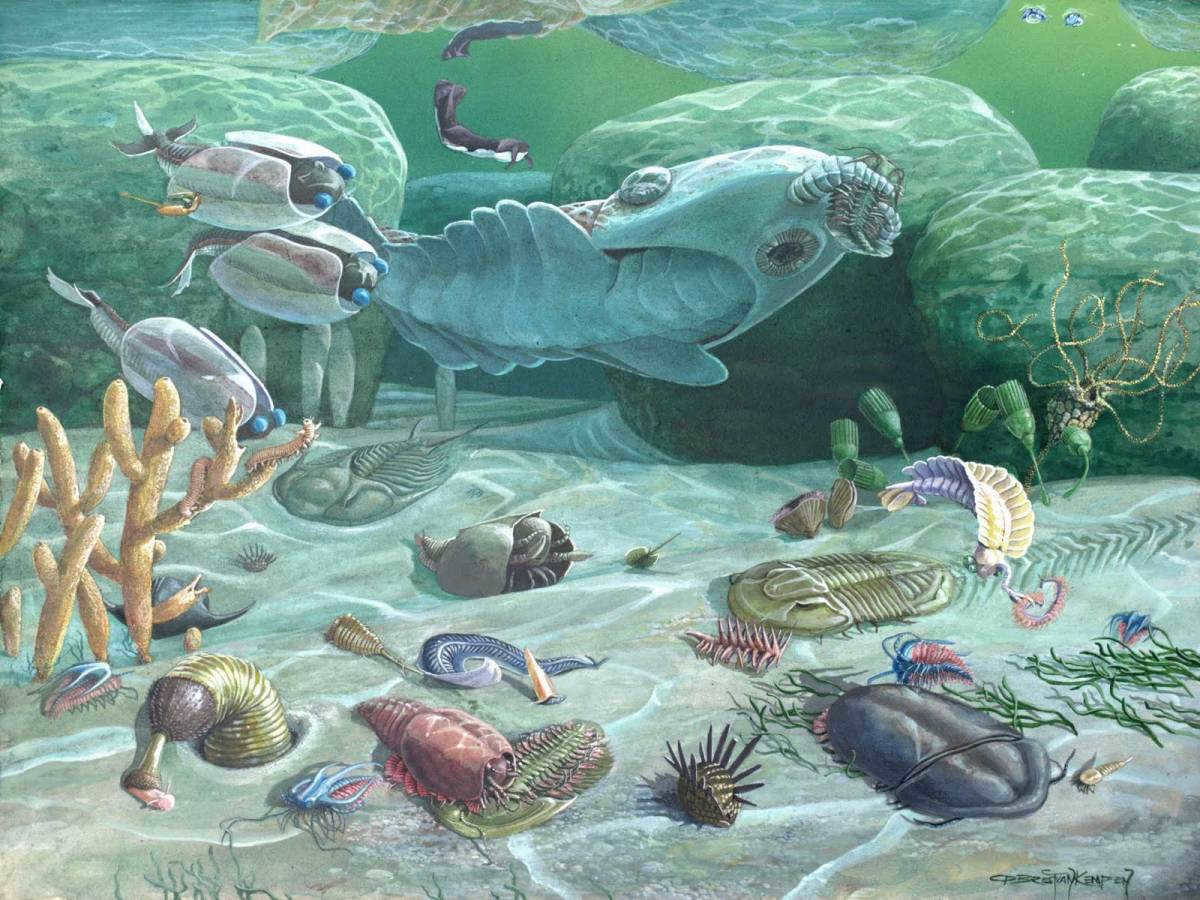
Living on Terra Firma
Approximately 750 million years in the past, there was a shift in the lithospheric plates. This resulted in the splitting of Rodinia, forming Gondwana and Eurasia. During this time, temperatures were around 30° C and oxygen levels were similar to what we experience today. However, despite these conditions, the land remained devoid of life, with only isolated patches of algae present.
Meanwhile, the sun continued to emit harmful radiation, causing destruction to the Earth’s surface. However, an interesting phenomenon occurred about 50 kilometers above the Earth’s surface, where the solar radiation penetrated the atmosphere. When oxygen encountered this radiation, it transformed into ozone, a different gas. Gradually, the ozone layer enveloped the entire planet, acting as a shield against the deadly radiation. Without this protective layer, life on land would simply not be possible.
Over millions of years, the ozone layer continued to thicken, and the land became covered with green lumps resembling moss. Despite its small size, this greenery played a vital role – it released even more oxygen into the atmosphere, causing a significant increase in oxygen levels. As a result, amphibians slowly began to inhabit the now habitable land.
Marshes
When the land dries up, it transforms into a vibrant realm of tropical marshes. The Okefenokee Marshes (Georgia, USA), known as “undulating earth” in the language of the Native Americans, are regarded as the contemporary equivalent of the marshes that thrived on our planet during that time.
Professor Fredrick Rich from the University of South Georgia, an expert in ancient swamps, shares the same belief as his colleagues that this particular bog bears a striking resemblance to those that existed roughly 300 million years ago during the Carboniferous period. He explains that it was during this time that a vast expanse of plant life flourished on the Earth’s surface for the first time in recorded history. These plants soared to heights of 20-30 meters and thrived in dense clusters, creating a humid tropical climate. In this lush environment, enormous insects such as the meganeura (dragonfly-like creatures that inhabited the Carboniferous period) took flight while meter-long millipedes slithered along the ground. The sheer size of these ancient insects and animals is attributed to the remarkably high concentration of oxygen in the atmosphere during that prehistoric era.
The Permian extinction
Around 250 million years ago, the Earth was home to various species, including the ancestors of dinosaurs such as the gorgonops and their prey, the scutosaurs. However, their future, along with that of 96% of marine species and 70% of terrestrial vertebrate species, was already predetermined. Roughly 252 million years ago, the Permian extinction event began – an unparalleled catastrophe in the history of our planet and one of the five major mass extinctions known to have taken place.
The causes of this phenomenon are still a mystery to this day. However, the eruption of the Siberian traps, which occurred during this time, is considered the most likely version and one of the main reasons. The exact trigger for these eruptions is still unknown. Worldwide, the air is filled with ash, blocking out sunlight, while the atmosphere is contaminated with toxins and carbon dioxide. Periodically, streams of hot magma reach the surface, continuing for 500,000 to 1 million years. The volume of basalt emitted from the Earth’s interior during this period would have been sufficient to bury the United States under a layer nearly 6 kilometers thick.
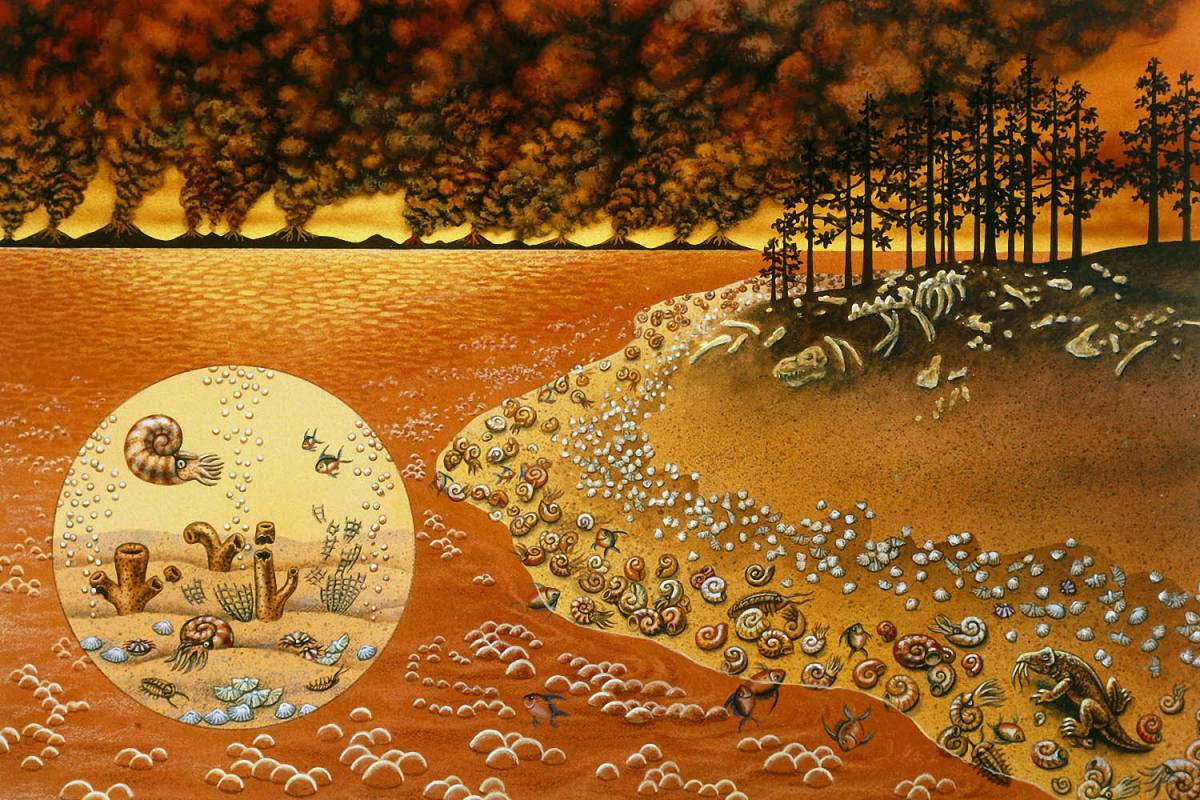
Pangaea
Around 250 million years ago, the Earth looked very different. The continents were all connected, forming one giant landmass known as Pangaea. This was a time when life on Earth was struggling to recover from a major extinction event known as the Permian extinction. During this event, 70% of all terrestrial vertebrate species died out, creating an opportunity for new species to emerge.
One of the most successful groups of animals to emerge after the Permian extinction was the dinosaurs. These “terrible lizards” are believed to have evolved from a small number of reptiles that managed to survive the extinction event. Over time, they became the dominant species on the planet, ruling over the land for millions of years.
However, while the dinosaurs were thriving, the Earth itself was undergoing major changes. The restless tectonic plates were causing the landmass of Pangaea to break apart. About 190 million years ago, Pangaea began to disintegrate, and the continents started to drift apart. This process continued for millions of years until the familiar shape of the world we know today began to take form. Around 180 million years ago, the Atlantic Ocean started to form, separating the continents even further.
The extinction of the dinosaurs
65 million years ago. It appeared that the dominant reign of the species known as “dinosaurs” would continue indefinitely on our planet. However, while there was no earthly force capable of disrupting this monopoly, there was one lurking in outer space – a massive asteroid hurtling towards Earth. Its destination: the shores of the Yucatan Peninsula. The present-day Gulf of Mexico is nothing more than a colossal crater formed by the immense impact of this celestial behemoth.
It’s a catastrophic event of prehistoric proportions. The arrival of an enormous asteroid spells doom for the dinosaurs, obliterating everything in its path with incredible force. The impact is so powerful that it’s equivalent to the detonation of a million atomic bombs. The aftermath is equally devastating, as fragments from the asteroid and the Earth’s crust are propelled thousands of kilometers away. The resulting meteor showers and earthquakes shake the very foundations of the planet, while tsunamis ravage the coasts.
The consequences of this cataclysm extend far beyond the initial impact. The Earth’s surface becomes a scorching inferno, causing vegetation to spontaneously ignite. Thick clouds of smoke and ash blanket the planet, casting a somber shadow for months on end, preventing the sun’s rays from penetrating. This dark veil envelops the world, signaling the end of the dinosaurs’ 165 million year reign.
However, amidst this devastation, a glimmer of hope emerges. The unassuming mammals, such as small shrew-like creatures, seize the opportunity to thrive and survive in this new post-apocalyptic world.
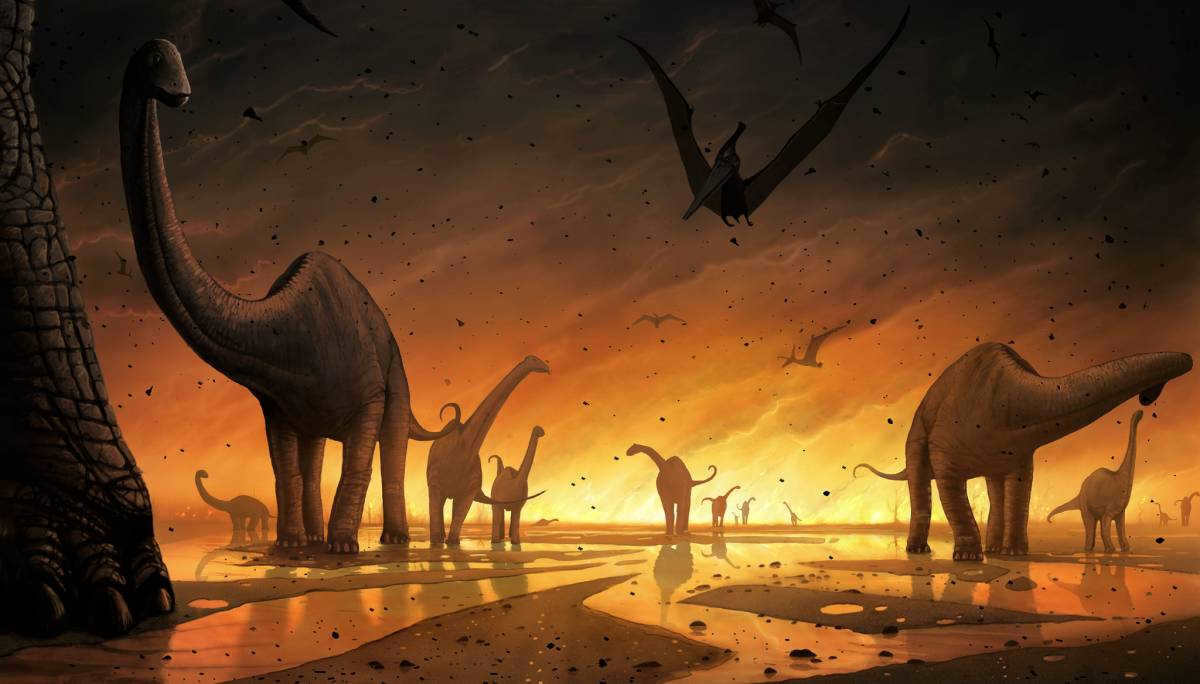
Mammals
Approximately 50 million years ago, mammals began to assert their dominance on the planet. While they had already appeared during the time of the dinosaurs, it was only after the extinction of the giant carnivores that they were able to disperse more widely. The evolution of mammals accelerated around 47 million years ago.
During this time, the length of the day was already close to 24 hours, the temperature averaged around 24° C, and the levels of oxygen were similar to what we experience today.
Our ancestors
When the collision between the Indian and Asian plates occurred, it resulted in the formation of a massive mountain range known as the Himalayas. This region was once covered by the ocean.
About 4 million years ago, a significant rift appeared along the eastern coast of Africa, separating the plates that make up the Earth’s crust. This rift stretches for approximately 6,000 kilometers and is accompanied by the growth of mountains along its edge. These mountains act as barriers, preventing moisture from the Indian Ocean from reaching the land. Consequently, the previously fertile rainforest in Africa transforms into a dry savannah due to increasing heat and aridity.
According to one popular theory, it was this transformation that forced our ancestors to abandon the trees and begin searching for food on two legs. This transition to an upright posture is believed to be a direct response to the changing environment. However, there are other hypotheses that provide additional fascinating details about the evolution of bipedalism.
As an illustration, in Africa not too long ago, the remnants of exceptionally old hominids were unearthed. These hominids existed precisely at the time when there was a divergence of the lineages that gave rise to chimpanzees and humans. So, what was the result? It transpired that these hominids potentially walked upright, indicating that their descendants had not yet descended from the trees.
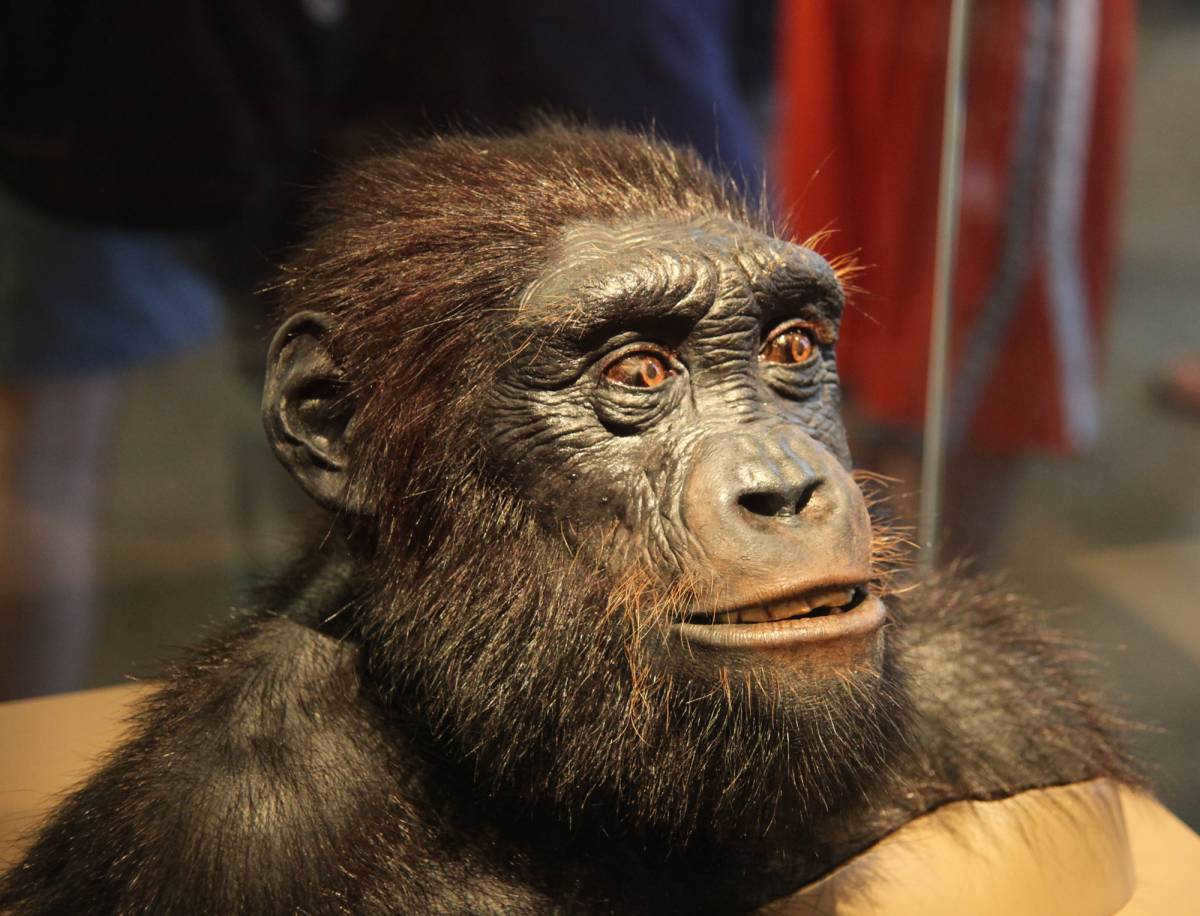
Undoubtedly, their walking was not as confident as ours, however, the fact remains. Nevertheless, the significant advancement in intelligent human activity commenced merely around 10-12 thousand years in the past – an ephemeral, astonishingly tiny fraction of a “second” in relation to the timescale that has transpired since the inception of our planet. Additionally, numerous experts assert that the Earth has only traversed approximately half of its lifespan. There is still much more to anticipate.

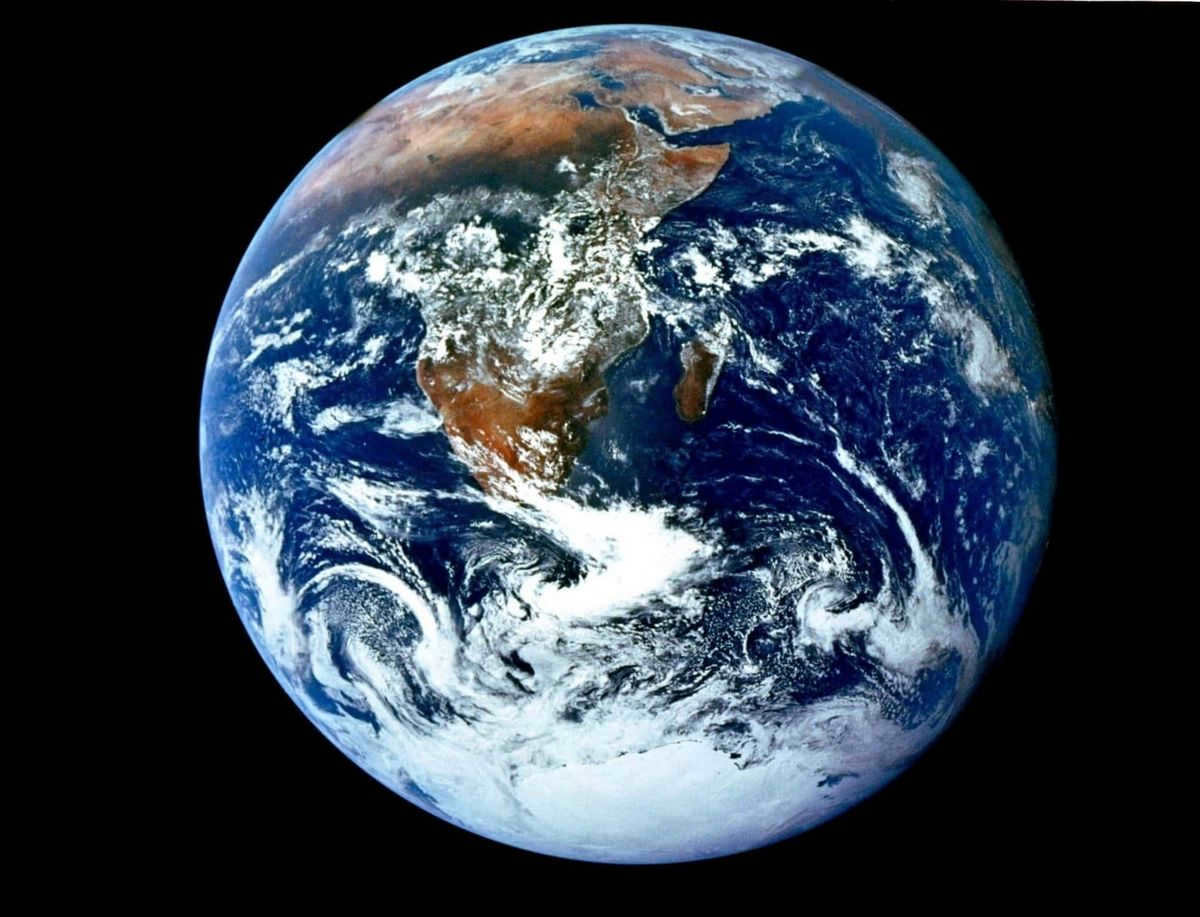
Outer space
It is truly delightful to comprehend that our planet, Earth, has emerged as the most favorable habitat for a diverse range of life forms. It possesses optimal temperature conditions, an abundance of air, oxygen, and secure illumination. It is truly astonishing to think that at one point in time, none of these existed. In fact, there was only a molten celestial body of uncertain form drifting in a state of weightlessness. However, let’s discuss the chronology of events in more detail.
An explosion of cosmic proportions
Early hypotheses on the origin of the universe
Scientists have proposed various theories to explain the birth of our planet. In the 18th century, the French hypothesized that the Earth’s formation was the result of a cataclysmic event caused by the collision of the Sun with a comet. On the other hand, the British proposed that a passing asteroid had sheared off a portion of the Sun, giving rise to a multitude of celestial bodies.
The German scientists took their theories even further. They believed that a colossal cold dust cloud served as the building blocks for the formation of the planets in our solar system. Later, they revised their ideas and suggested that the dust cloud was actually scorching hot. One thing remains clear: the formation of our Earth is intricately intertwined with the creation of all the planets and stars that comprise our solar system.
The Origin of the Universe
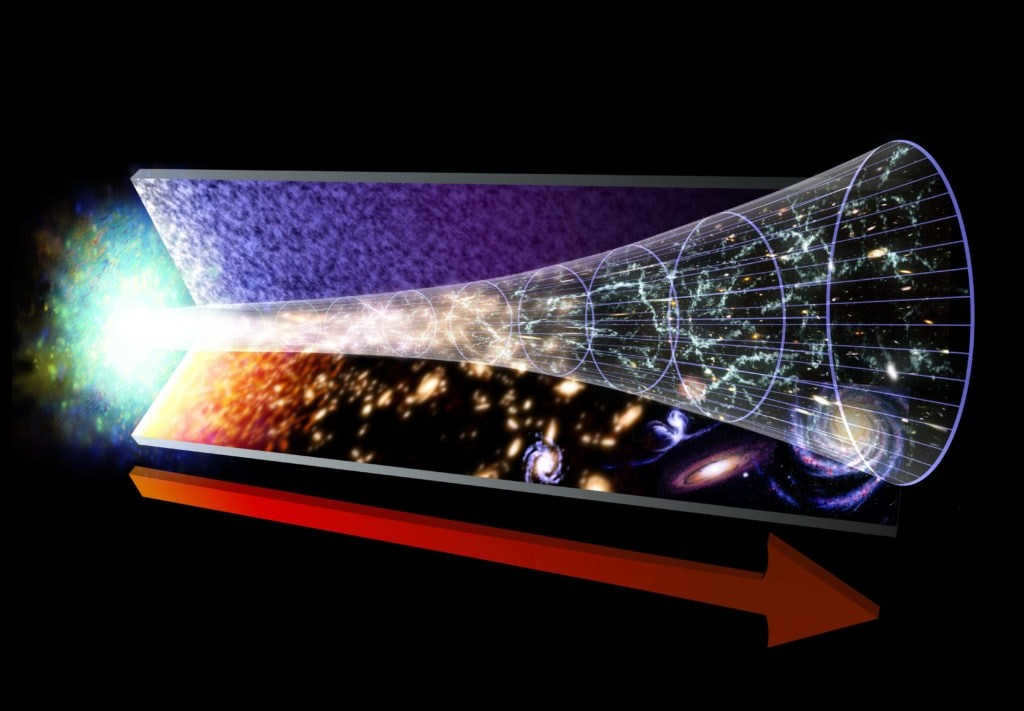
Presently, astronomers and physicists unanimously agree that the universe originated from the event known as the Big Bang. Billions of years ago, a colossal fireball erupted, fracturing into fragments in the vast expanse of outer space. This resulted in a massive expulsion of matter, with its constituent particles carrying immense energy. The sheer force of this energy hindered the formation of atoms, causing them to repel one another. The extremely high temperature, reaching approximately one billion degrees, further exacerbated this phenomenon. However, after a million years had passed, the temperature of space gradually cooled down to around 4000º Celsius. It was at this juncture that atoms of light gases, specifically hydrogen and helium, began to attract and coalesce.
The birth of the Earth: from gaseous to solid state
The young celestial body possessed an immense gravitational force, which led to the formation of other planets at various distances from clusters of cosmic dust and gases, including our beloved Earth. A comparison of the compositions of different celestial entities in our solar system reveals their distinctiveness.
Mercury, for instance, consists predominantly of metal, providing it with a unique resistance to the sun’s rays. Venus and Earth, on the other hand, boast rocky surfaces that add to their charm. Meanwhile, Saturn and Jupiter reign as gas giants, primarily due to their sheer distance from the sun. Interestingly, these colossal giants serve as guardians, shielding other planets from meteorites by pushing them away from their designated orbits.
The Creation of Planet Earth
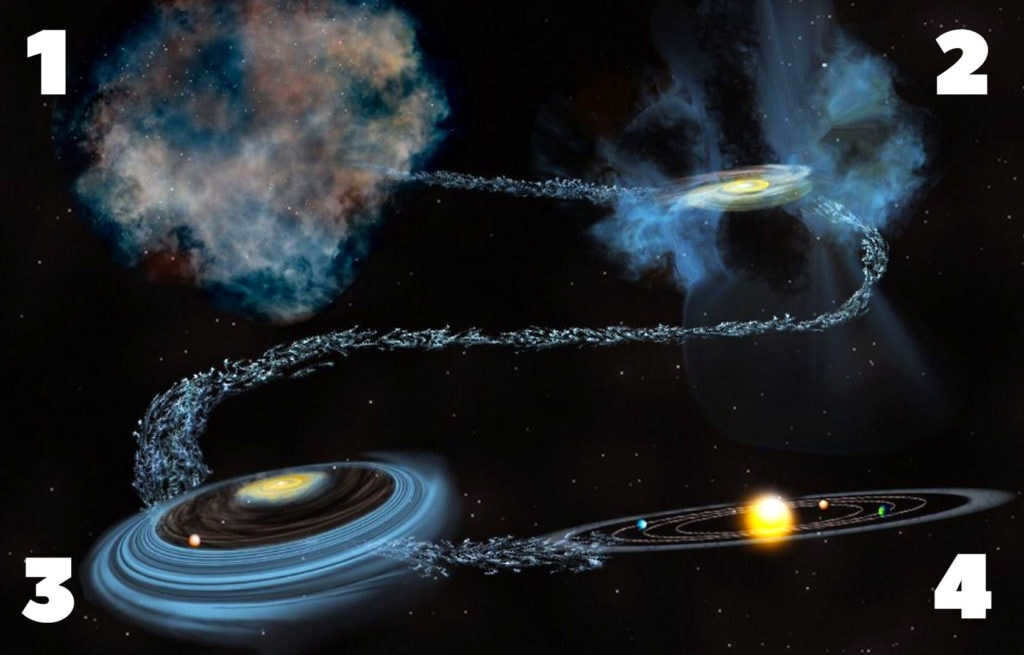

The Earth began to form using the same mechanism that was responsible for the creation of the Sun. This process started approximately 4.6 billion years ago. Due to gravity and compression, heavy metals such as iron and nickel migrated towards the center of the young planet, eventually forming its core. The high temperatures present at that time provided the ideal conditions for a series of nuclear reactions. As a result, the mantle and core of the Earth became separate entities.
The release of heat caused the melting and emergence of lightweight silicon on the surface, which served as the basis for the initial crust. As the planet gradually cooled down, volatile gases were released from its interior, leading to volcanic eruptions. The molten lava from these eruptions then solidified to form rocks.
The gas compositions were held in place around the planet by the force of gravity. They combined to create an atmosphere, initially lacking in oxygen. Interactions with frigid comets and meteorites resulted in vast bodies of condensed vapor and thawed ice. The landmasses fragmented and fused together, buoyantly floating in the scorching mantle. This cyclical process has occurred numerous times over the course of nearly four billion years.
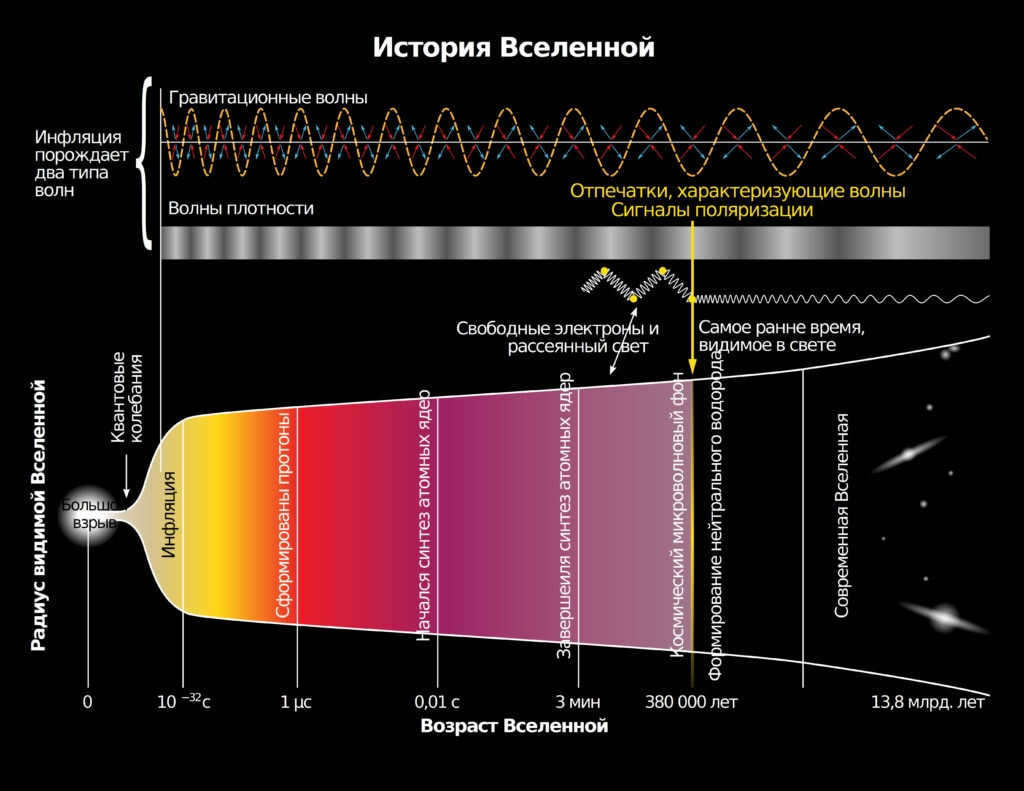
The path to the emergence of life
As the Earth took shape, it enhanced its gravitational pull on celestial bodies such as rocks, asteroids, meteorites, and dust particles. These objects gradually fell onto the surface and worked their way into the planet’s interior due to centrifugal forces, ultimately releasing all of their energy. The Earth became more compact. The occurrence of chemical reactions provided the necessary conditions for the development of the first unicellular life forms.
The birth of our planet occurred when a nebula, a clump of cosmic dust, was shaped by the forces of solar energy, thermonuclear reactions, and gravity. This process spanned countless years, making human existence a mere fraction of a moment in the grand scheme of the Universe. Therefore, it is imperative for us to safeguard our home instead of endangering it, as we have no alternative place to reside.
Interesting video on the emergence of the Earth
In case you come across any mistakes, kindly select the specific text and hit Ctrl+Enter.

Earth
The ground beneath our feet may appear to be the most stable and reliable thing. However, this claim is highly controversial. The well-known world map with its continents, land outlines, and oceans is far from being the most stable system. The appearance of the planet is constantly changing, and has been since ancient times.
The continents have been drifting ever since the planet cooled down after its formation process and a stable crust was established. Scientists suggest that initially, a thin oceanic crust was formed, followed by the gradual development of a thicker continental layer.
The concept of continental drift
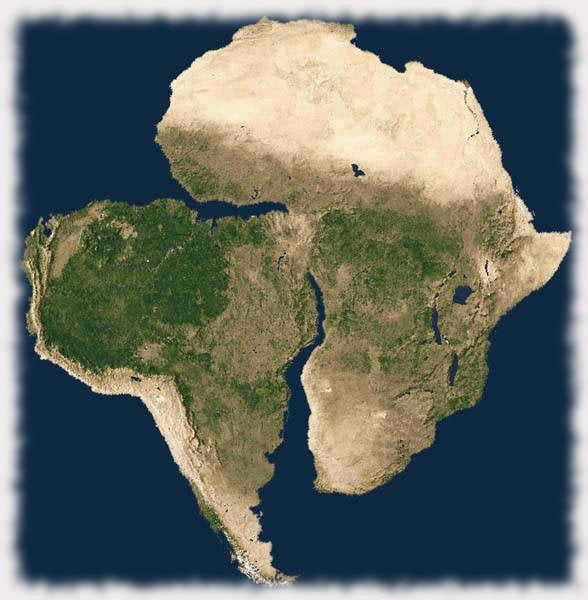
When considering the past state of the planet’s surface, one cannot ignore the fundamental theory that sheds light on this matter. The concept of continental drift was formulated by scientist Alfred Wegener, who brought attention to the striking resemblance between the outlines of South America and the African continent. Indeed, the coastlines of these landmasses resemble two interconnected puzzle pieces, suggesting they were once part of a singular continent. Initially, the scientific community greeted this novel theory with skepticism, but subsequent evidence provided its validation.
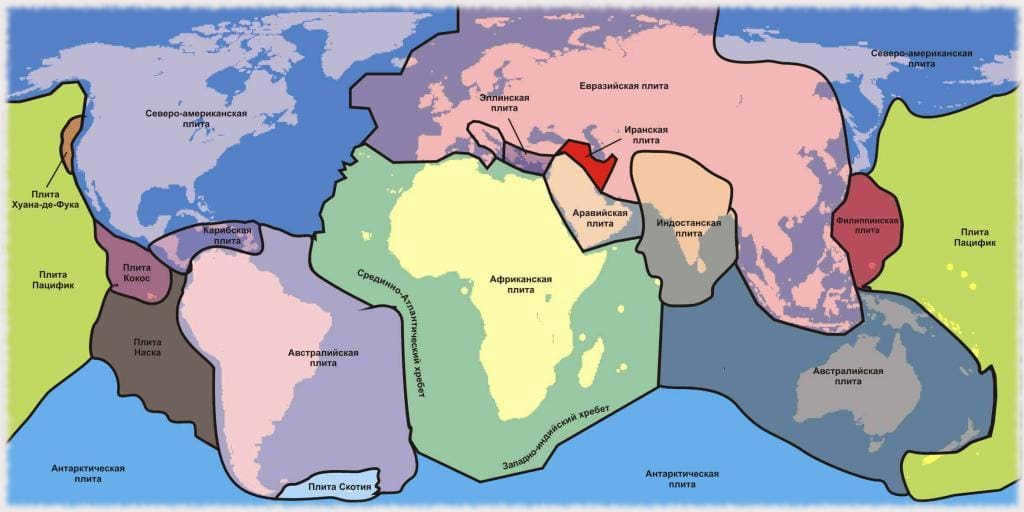
The Earth’s lithospheric plates are not a single solid structure, as previously believed. Instead, they consist of fragmented pieces resting on a layer of molten magma, which acts as a slippery surface enabling movement. These plates, along with the continents they carry, are in constant motion, although at a very slow pace. Some parts of the Earth’s crust sink into the mantle, undergoing melting and creating subduction zones where plates overlap. In other areas, the plates move apart, leading to seafloor spreading and the formation of new crust. These processes, occurring over billions of years, have been responsible for the ever-changing appearance of our planet.
Did you know that there are approximately 20 plates of various sizes on our planet? The largest one, known as the Pacific plate, is responsible for a significant amount of seismic and volcanic activity due to its massive size and weight. This region, often referred to as the “fire belt” of the Pacific Ocean, experiences frequent earthquakes and volcanic eruptions where it meets other sections of the Earth’s crust. Additionally, there are other areas of high seismic activity where different plates intersect.
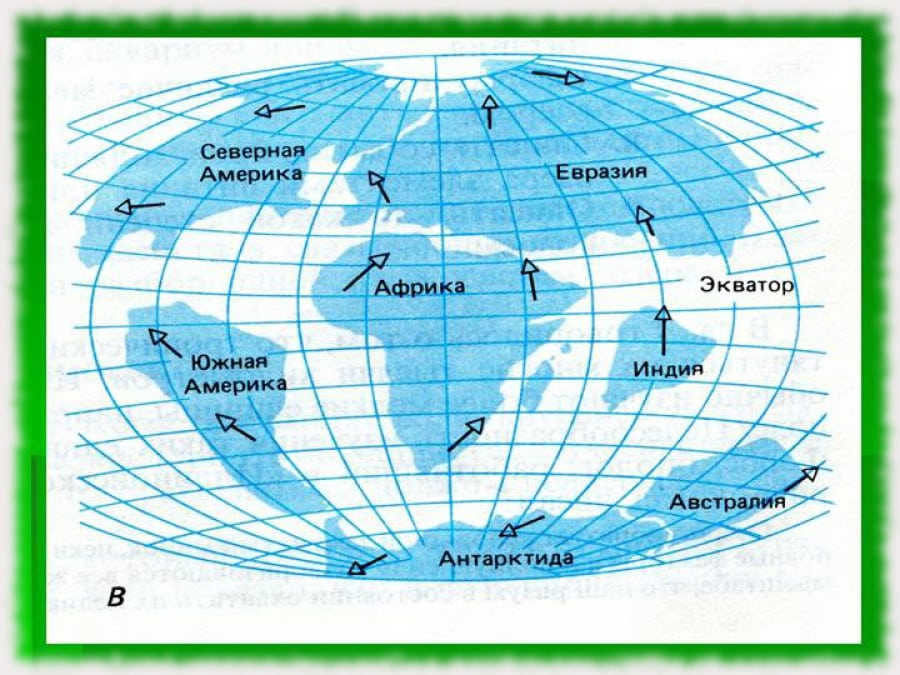
Therefore, in previous times, Africa and South America comprised a solitary continent, with the delineation of the rupture of these land masses being observable and entirely consistent up to the present day. Likewise, other continents were once joined together as a solitary landmass. Periodically, the Earth experiences phases of land amalgamation, known as supercontinents, which subsequently separate. The most recent example of this was Pangaea – it remained unified until the commencement of the Mesozoic era.
Approximately 200 million years ago, the supercontinent known as Lavrasia underwent a split, resulting in the separation of its two main parts – Eurasia and Gondwana. Over time, Lavrasia further divided, giving rise to present-day North America and Eurasia, while Gondwana formed the southern continents. As the continents drifted apart, the distance between them increased, eventually leading to the formation of oceans. Despite their divergence, certain similarities persisted, evident in the coastal features, geological structures, rock properties, and fossil remains found within their boundaries.
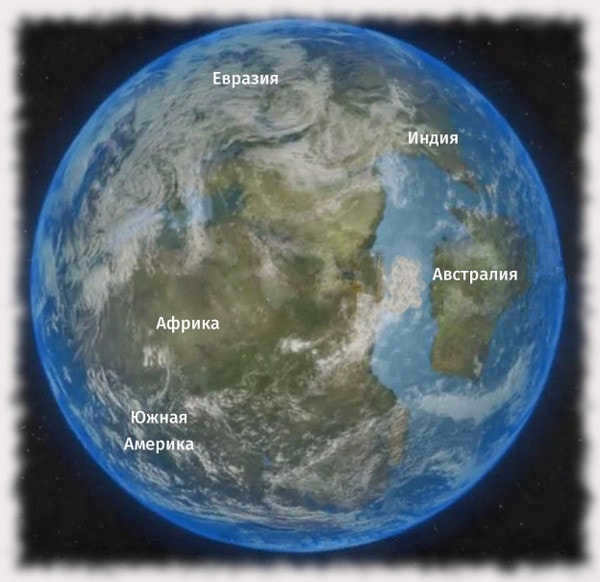
According to scientists, Pangaea was not the only supercontinent in the history of Earth. It is believed that the formation of massive landmasses occurs in a cyclical manner, approximately every 300 million years, and there may have been 5 or 6 such periods in the planet’s history. However, proving this theory is challenging, and currently, only two supercontinents are officially recognized – Pangaea and Rodinia, which existed during the late Cambrian period. Even the reconstruction of Rodinia poses difficulties.
Challenges in reconstructing ancient continents
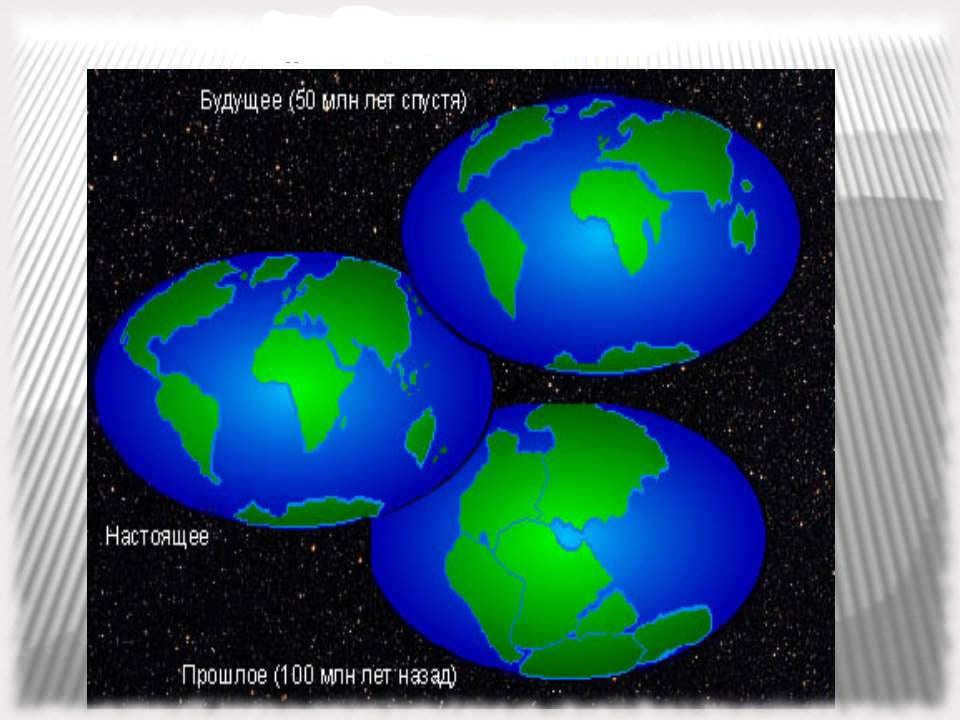
Today, there exist computer programs that are actively utilized to instantly generate the representation of the Earth’s shape for any given time period, taking into consideration the available data on plate movements that have long been accessible to scientists. In fact, the dynamics of all processes have been extensively studied, and theoretically, this data enables us to recreate the geography of the planet for any prehistoric era.
However, apart from the gradual plate movements, there are also abrupt events that occur. Floods, collapses, volcanic eruptions, and supervolcano explosions are unpredictable, potentially unknown, and challenging to incorporate into these programs. Furthermore, the dynamics of plate movements may have varied in the past.
Is the planet expected to undergo changes in the coming years?
Continents are in constant motion, indicating that the Earth will indeed undergo changes in the future. Africa and South America will continue to drift apart, just as Eurasia will separate from North America. Furthermore, Eurasia will eventually split into two separate continents, with the tectonic crack of Lake Baikal expanding relentlessly. These are just some of the alterations that will occur.
Throughout history, the planet’s appearance has continually evolved, primarily due to the movement of continents. This process will persist in the future, leading to further transformations.
Interesting Video about the Transformation of Earth’s Surface
If you happen to come across any mistakes, please mark the specific text and press Ctrl+Enter.
Let’s go back to the very beginning: 5 billion years ago. However, can you imagine what the Earth looked like back then? It was nothing more than a young Sun surrounded by dust from the protoplanetary disk. Now, let’s jump ahead in time a little bit. We now witness countless rocks encircling the Sun, gradually coming together through the process of accretion. After millions of years, these rocks would eventually form into over a hundred planets that orbit the Sun.
4.54 billion years ago, the Earth came into existence. Curiously, during this primordial era, the state of “life” on our planet resembled its demise, as perceived by religion. There was scarcely any solid “land” to be found, instead, a fiery sea of molten rock occupied the Earth’s surface. The atmosphere consisted primarily of carbon dioxide, nitrogen, sulfur, and water vapor.
Religious scholars once estimated the age of the Earth to be a mere 6,000 years. However, it was only at the beginning of the 19th century that geologists began to speculate that our planet is actually quite ancient. South Africa played a pivotal role in this realization, as the remains of the oldest continental plate were discovered in one of its regions. This discovery led scientists to conclude that the rocks in this area were incredibly old.
This represented a significant breakthrough. However, for geologists in the field, even that estimation appeared inadequate. The duration of uncertainty in the scientific community would have remained unknown if not for the astute observation by young scientist Ernest Rutherford that radioactive elements exist within our planet. These elements generate substantial amounts of heat, fundamentally undermining Kelvin’s calculations. It was revealed that the Earth does not gradually cool down, but rather conceals permanent heat sources. Most importantly, the decay of radioactive elements enabled the precise determination of the Earth’s age.
The emergence of the Moon
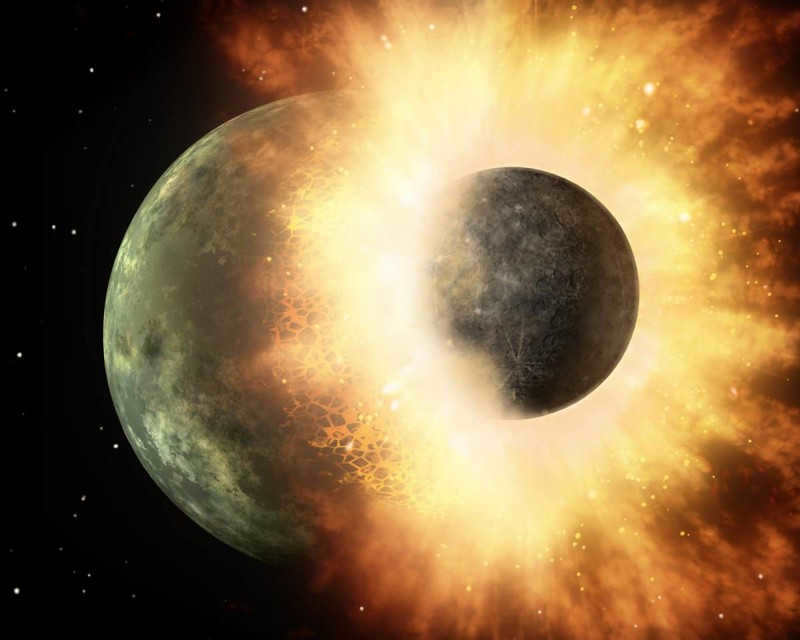
After a few million years (which is considered infancy in terms of planetary time), the Earth was faced with some significant challenges. A neighboring planet called Teia, roughly the size of Mars, was on a collision course with Earth. Fortunately, the two planets narrowly missed each other, but the impact was still substantial. The force of the collision caused both planets to become molten, with waves of rock rippling across the Earth’s surface and massive amounts of debris being ejected into space. Miraculously, the Earth survived this cosmic catastrophe and even gained a unique feature in the process. The leftover debris from the collision was rapidly pulled in by Earth’s gravity, forming a beautiful ring around the planet.
Meteorites strike
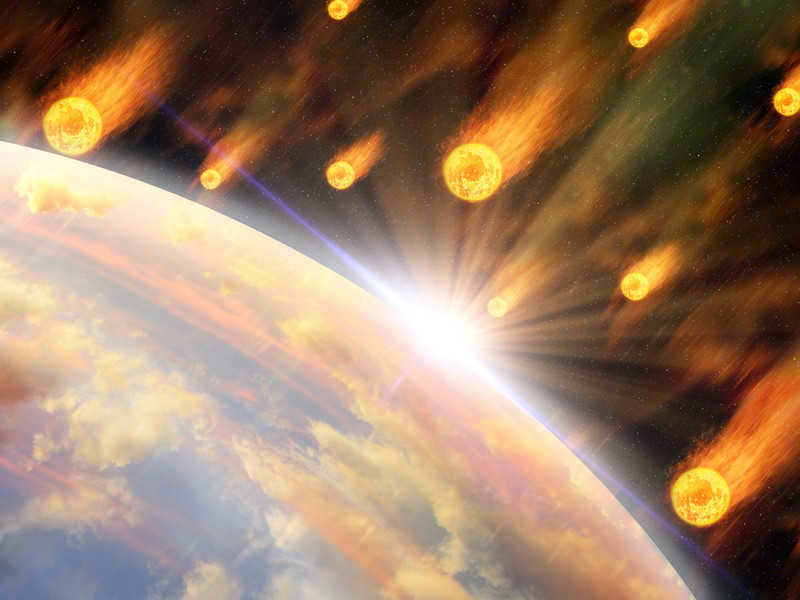
The Earth had a challenging early life. Approximately 3.9 billion years ago, it experienced a constant bombardment of debris from the creation of the solar system. Many scientists believe that these debris brought water to the planet. Although each piece contained only a small amount of water, the attacks persisted for over 20 million years. This prolonged assault is what led to the gradual formation of Earth’s oceans. So, the next time you drink a refreshing bottle of mineral water, remember that every drop, every puddle on our planet is billions of years old.
The planet’s core is still in a molten state, while the surface has cooled to a temperature of 70-80° C. Due to the Earth’s rapid rotation, the Sun sets just three hours after dawn, resulting in powerful and destructive winds that surpass even the most severe hurricanes. Additionally, the immense gravitational force exerted by the nearby Moon creates massive waves that sweep across the planet. However, as time passes, the Moon gradually moves away, causing the waves to subside and the Earth’s rotation to gradually slow down.

3.8 billion years ago, the Earth was entirely submerged in water. However, upon closer inspection, one can spot small land masses – these are molten rock formations, volcanoes erupting through the ocean’s surface. Over time, these lava formations will cool and solidify, giving rise to volcanic islands. Eventually, these islands will merge together, forming the initial continents. Nonetheless, the atmosphere remains toxic, and the intense heat makes it an unsuitable vacation destination.
Ever since its inception, the Earth has been bombarded by meteorites. However, 3.8 billion years ago, an even more tumultuous phase occurred. Evidently, something disrupted the orbits of these meteorites, causing them to rain down on Earth like hail.
However, our planet did not suffer in vain – the meteorites brought not only water, but also minerals, simple proteins, and amino acids. Scientists believe that these elements were present in the meteorites. Now that the storms have subsided and the Earth has cooled down, it is likely that these substances will come into play.
Life on Earth originated near hydrothermal vents in the depths of the ocean. In these dark and cold depths, where sunlight barely reaches and temperatures hover just above freezing, underwater vents release a substance that resembles blue smoke. This is not actually smoke, but hot liquid. Even at the bottom of the ocean, seawater can seep through cracks in the crust, collecting gases and minerals along the way. This heated mixture is then expelled back into the ocean. There, it combines with the minerals and chemicals left behind by meteorites, creating a fertile environment for life to thrive.
According to numerous researchers, life emerged from this biochemistry. Through a phenomenon called abiogenesis, these substances came together and gave rise to single-celled bacteria, which were the earliest manifestations of life on Earth. There is speculation, however, that life may have originated multiple times before ultimately assuming the familiar forms we know today. Life has indeed emerged. And what ensued? The passage of millions of years, yet with little dramatic change – evolution appears to not be in any rush to generate more intricate organisms.
Stromatolites
are unique rock formations that are formed by the growth and sediment trapping activities of microbial communities.
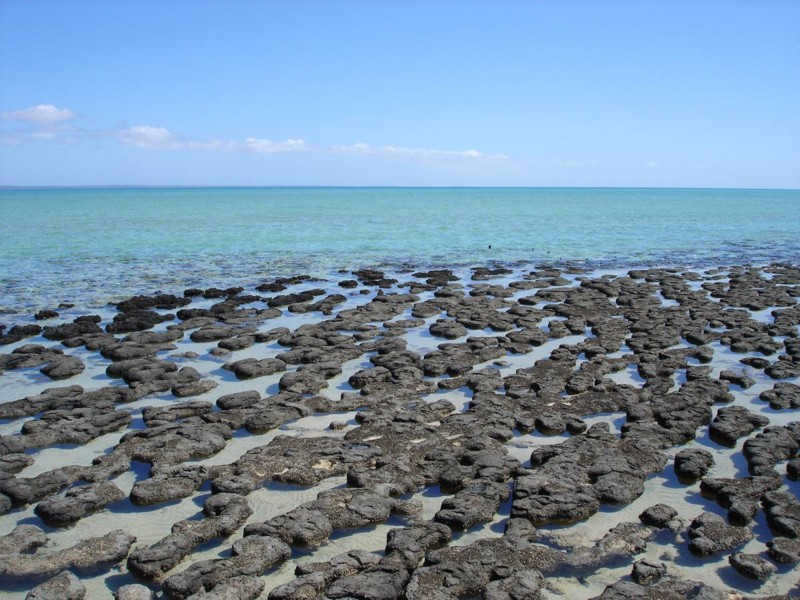
3.5 billion years ago, if we explore the shallow ocean, we would come across submerged structures that resemble rocks. However, these formations are actually communities of cyanobacteria, consisting of living bacteria. The remains of these microbial mats are known as stromatolites. These stromatolites thrive on photosynthesis, a process that converts sunlight and water into glucose, a simple form of sugar. As a by-product of this conversion, oxygen is released. For countless years, these unassuming “rocks” have played a crucial role, saturating the oceans and atmosphere with oxygen. Without them, the existence of life on Earth, including ourselves, would be highly unlikely.
Rodinia
Rodinia, the supercontinent that existed between 1.1 billion and 750 million years ago, was a massive landmass that encompassed most of the Earth’s continents. During this time, the Earth’s tectonic plates were moving and colliding, causing the formation of Rodinia. This supercontinent played a significant role in shaping the Earth’s geology and the evolution of life on the planet.
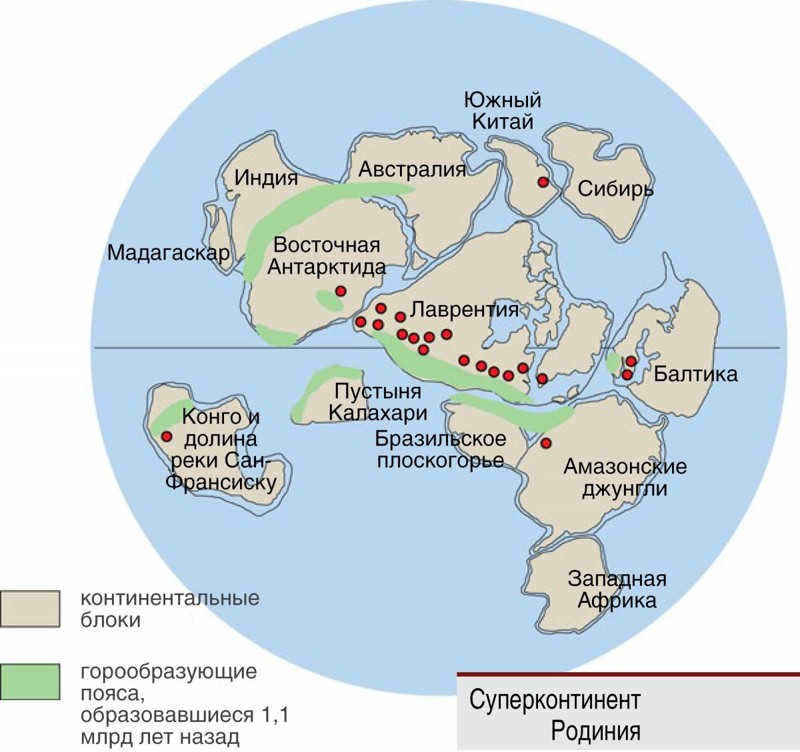
Approximately 1.5 billion years in the past, the length of a day on Earth was at least 16 hours. Moreover, it has been approximately 3 billion years since the formation of the planet, and yet there is still a lack of sophisticated life forms.
“Snowball Earth.”
can be rephrased as “The phenomenon known as “Snowball Earth.””
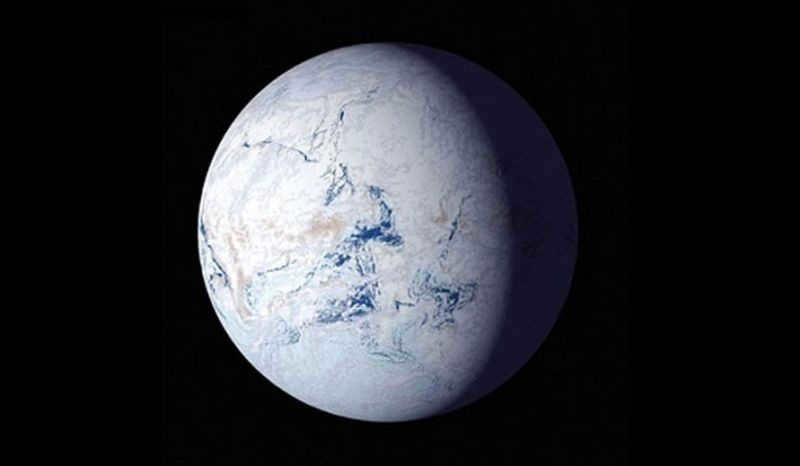
As a result of significant geological activity, a vast number of volcanoes emerged, giving rise to a substantial amount of volcanic emissions. These emissions, consisting predominantly of carbon dioxide, combine with water to form acid rain. The rocks on Earth effectively absorb this acid rain, preventing it from accumulating in the atmosphere and thus maintaining a warmer climate. Presently, there are significantly more of these rocks exposed on the Earth’s surface, a result of the continents colliding. Simultaneously, due to natural climate fluctuations and variations in solar radiation, the Earth is experiencing a cooling trend. The amount of greenhouse gases being released into the atmosphere is insufficient to trap the heat from the Sun.
Another possible scenario is that the assembly of the supercontinent Rodinia resulted in the obstruction of equatorial waters that carried warm currents. This led to the glaciation of the polar regions, causing them to reflect more sunlight and consequently triggering the expansion of ice to other regions. As a result, the Earth’s surface temperature plummeted to an astonishing -40 degrees Celsius. The ice sheets immobilized the oceans to depths exceeding 1 kilometer.
This period is believed to be one of the longest and most frigid ice ages in the history of our planet. Advocates of this hypothesis refer to it as the “Snowball Earth” era. It is postulated that during parts of the Cryogenian and Ediacaran periods of the Neoproterozoic era, and potentially during other geological epochs as well, our planet was entirely enveloped in ice.
The phenomenon known as the Cambrian Explosion
marks a significant period in Earth’s history.
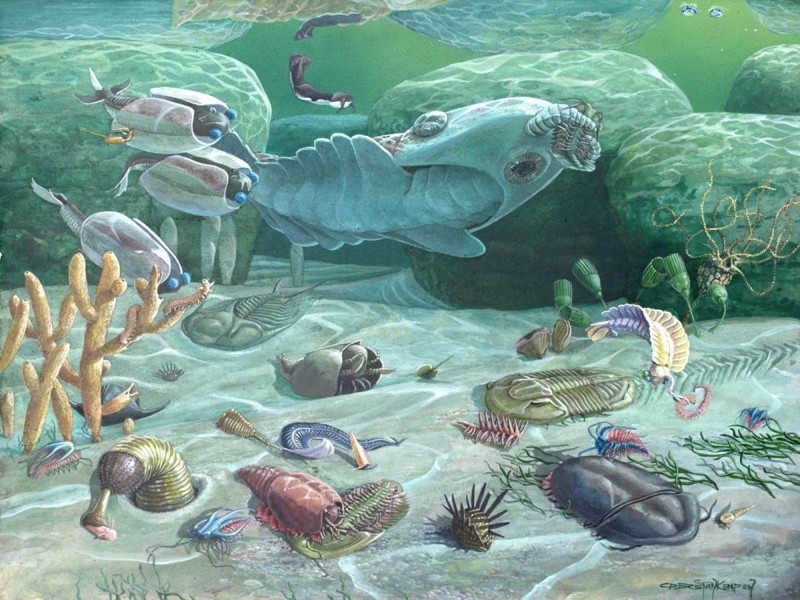
Despite all odds, the planet remains hot beneath the icy surface. The volcanic activity continues to thrive underneath the frozen layer, gradually awakening one volcano after another over time. However, while the rocks that absorb carbon dioxide from these eruptions remain hidden beneath the ice, there is nothing to prevent the accumulation of this gas in the atmosphere, which then traps the sun’s heat and leads to the gradual melting of the glacier. As the ice melts, it creates cracks, fractures, and irregularities in the Earth’s crust, thereby fostering even more volcanic activity. Furthermore, this melting process triggers a series of chemical reactions that release vast amounts of oxygen, which had been trapped within the ice for millions of years. Additionally, the accumulated heat causes the splitting of Rodinia, an event that occurred approximately 750 million years ago.
The duration of a day has already reached approximately 22 hours, while the oxygen concentration in the atmosphere has reached unprecedented levels. Around 540 million years ago, the phenomenon known as the Cambrian Explosion took place, where a vast array of complex marine organisms seemingly emerged out of thin air.
The Cambrian Explosion theory aims to provide an explanation for the abrupt emergence of animal fossils in the lower Cambrian sediments, while their absence is observed in older sediments. However, recent research has revealed that numerous sophisticated animals, resembling contemporary species, actually originated well before the onset of the Cambrian period. Nonetheless, it is evident that a vast majority of modern taxa initially appeared during the Cambrian period and this process unfolded at a remarkable pace. The remarkable increase in organism size and the diversification of species can likely be attributed, at least in part, to an elevation in oxygen levels.
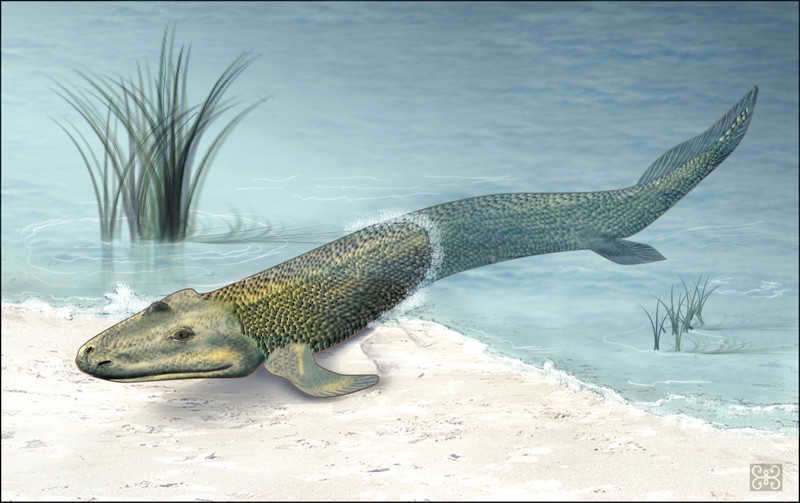
Marshlands
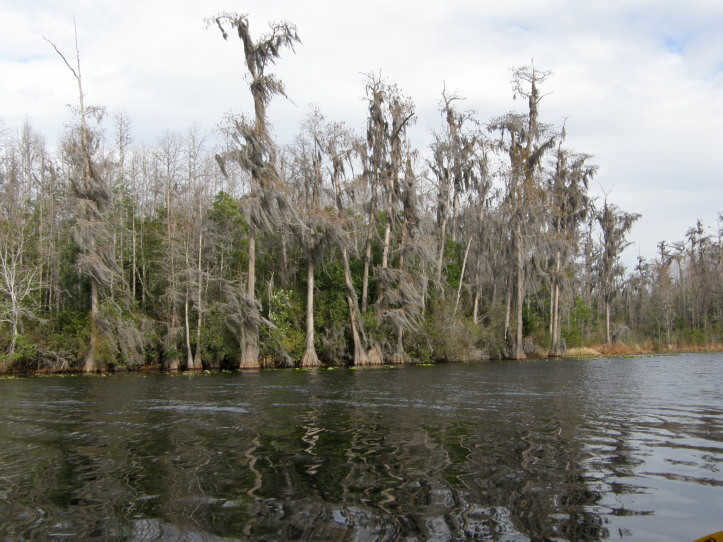
The Earth’s landscape transformed into a lush expanse of tropical swamplands. The Okefenokee Swamps located in Georgia, USA, are known as the present-day equivalent of the ancient swamps that once covered the planet.
Professor Fredrick Rich from the University of South Georgia, an expert in prehistoric wetlands, shares the belief of his colleagues that this particular wetland bears striking resemblance to those that thrived approximately 300 million years ago during the Carboniferous period. It was during this era that a vast expanse of vegetation first emerged on Earth’s surface, marking a pivotal moment in its history. Towering plants, reaching heights of 20-30 meters, densely populated the landscape, creating a humid tropical climate. Meganeurae, colossal dragonfly-like insects that inhabited the Carboniferous period, soared through the air, while meter-long millipedes crawled along the ground. The extraordinary size of these insects and animals during this ancient epoch can be attributed to the exceptionally high levels of oxygen present in the atmosphere.
The Permian extinction in a nutshell
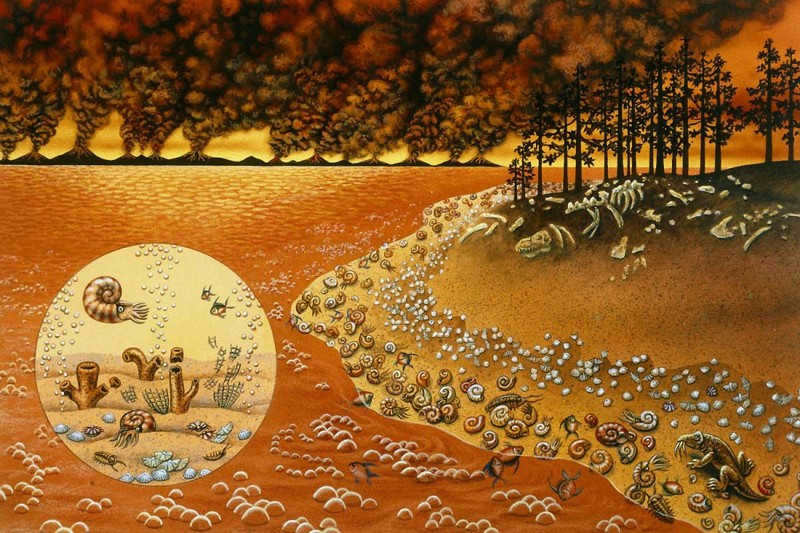
Around 250 million years ago, the Earth was already home to early dinosaur ancestors known as gorgonops and their prey, the scutosaurs. However, their future, along with 96% of marine species and 70% of land-dwelling vertebrates, was already determined. Approximately 252 million years ago, the Permian extinction event began, marking the most extensive mass extinction in history and one of the five major extinction events to have occurred on our planet.
The cause of this phenomenon is still a mystery, even to this day. However, one of the most likely theories suggests that it was triggered by the eruption of the Siberian traps, which occurred during this period. The exact cause of these eruptions remains unknown. The global air is now filled with ash, blocking out sunlight and saturating the atmosphere with toxins and carbon dioxide. Periodically, streams of hot magma make their way to the surface, continuing for a duration of 500,000 to 1 million years. The sheer volume of basalt emitted from the Earth’s interior during this time would have been sufficient to bury the entire United States under a nearly 6-kilometer thick layer.
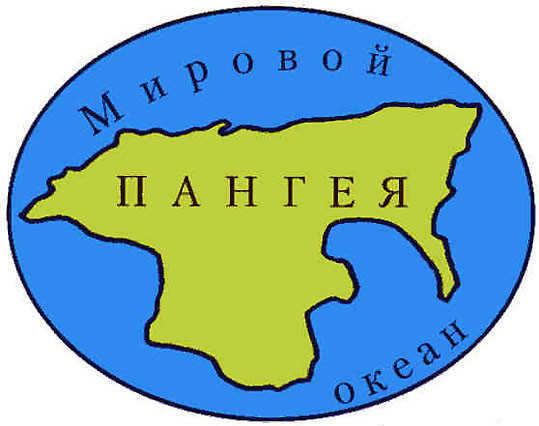
Around 250 million years ago, the Earth’s landmass was once again devoid of life. After fifty million years, the continents merged together to create a single supercontinent called Pangea. The Permian extinction event wiped out 70% of all land-dwelling vertebrate species, leaving an opportunity for a new species to dominate the planet like no other. This new species, known as dinosaurs, is believed to have evolved from a small group of reptiles that survived the Permian extinction.
As the dinosaurs thrive and evolve, the restless tectonic plates begin to tear the Earth apart once again. Approximately 190 million years ago, Pangea breaks apart, leading to the formation of the Atlantic Ocean around 180 million years ago.
The extinction of the dinosaurs
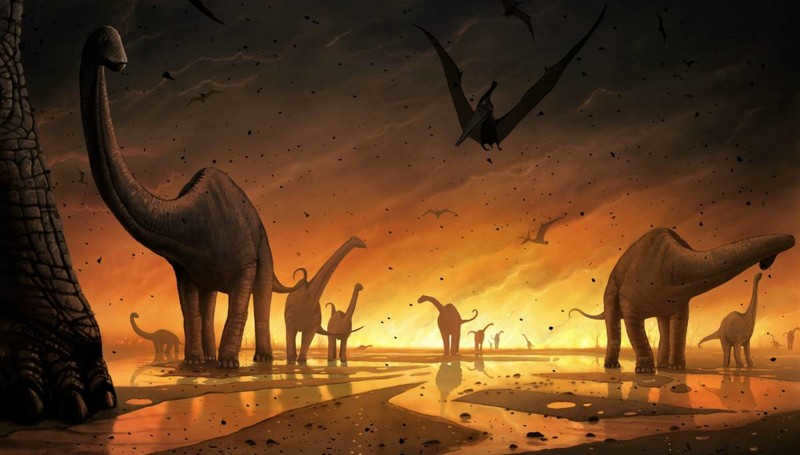
Approximately 65 million years in the past. It appears that the ruling dynasty known as “dinosaurs” will reign over the planet for eternity. However, while there may not be any earthly force capable of breaking this monopoly, there exists one in the vastness of space. A massive asteroid is currently hurtling towards our planet, specifically aimed at making impact with the coastline of the Yucatan Peninsula. The present-day Gulf of Mexico serves as nothing more than a colossal crater created by the immense force of this celestial collision.
Mammals
Mammals are a group of animals that have certain characteristics that distinguish them from other animals. They are warm-blooded, meaning their body temperature remains relatively constant, regardless of the external temperature. They also have hair or fur, which helps to regulate their body temperature and protect them from the elements. Another defining characteristic of mammals is that they give birth to live young and nurse them with milk produced by mammary glands. This method of reproduction is known as viviparity. Some common examples of mammals include dogs, cats, elephants, and humans.
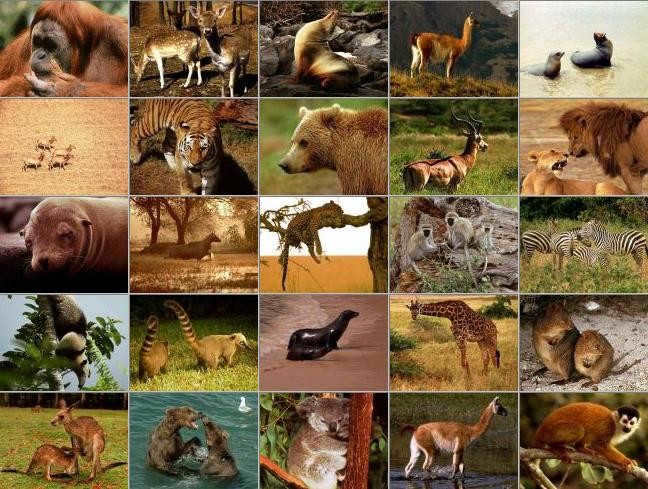
About 50 million years ago, mammals began to feel more confident in their ability to inhabit the Earth. While they had appeared alongside dinosaurs, it wasn’t until after the extinction of giant carnivores that they were able to spread and thrive. Around 47 million years ago, the evolution of mammals started to accelerate.
During this time, the length of the day was already close to 24 hours, the temperature was around 24 degrees Celsius, and oxygen levels were similar to what we experience today.
Our forefathers
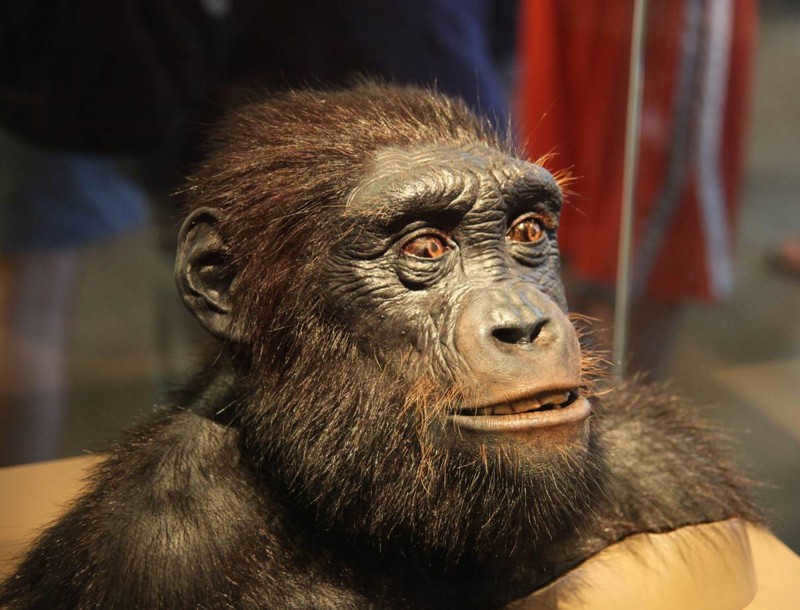
The collision of the Indian and Asian plates led to the creation of a massive mountain range known as the Himalayas. This region was once covered by the ocean.
As an illustration, not too long ago in Africa, the remains of extremely ancient hominids were unearthed, who existed precisely during the divergence of the lineages leading to chimpanzees and humans. And what happened? It transpired that these hominids might have already ambulated on two legs – in other words, prior to their descendants descending from the canopies.
Naturally, they did not walk as confidently as we do, but the veracity remains. Yet, the significant leap in the advancement of intelligent human activity only commenced approximately 10-12 thousand years ago – a mere fraction, an incredibly minuscule “second” on the chronological scale that has elapsed since the inception of our planet. And according to numerous experts, the Earth has only traversed roughly half of its lifespan. There is still more to come.
FISHKINET
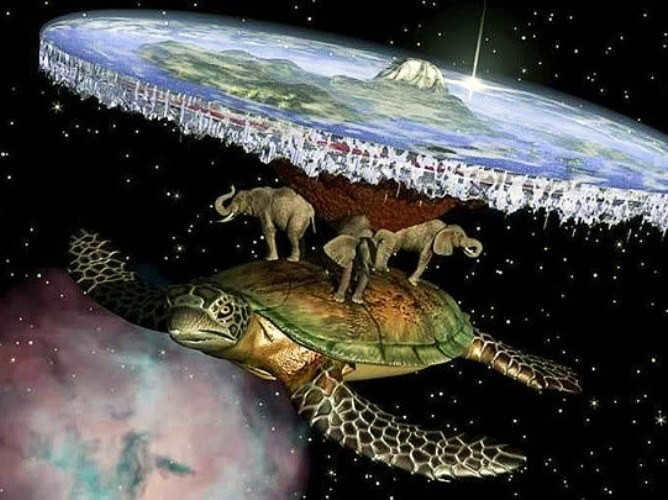
Ancient Greek perceptions of the Earth
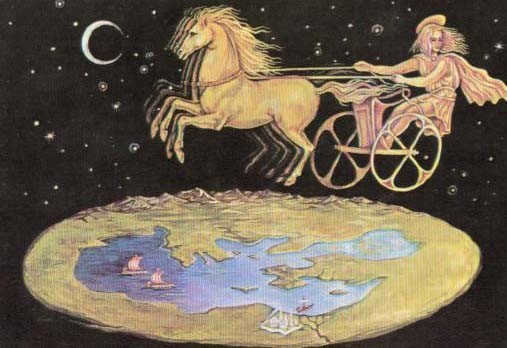
In the past, the Earth was believed to have a flat shape. This belief was held by ancient Greek philosopher Thales of Miletus, who lived in the 6th century BC. He believed that the Earth was a flat disk, surrounded by an unreachable sea. According to his belief, every evening the stars would come out from this sea, and every morning they would sink back into it. In the east, the sun god Helios (later identified with Apollo) would rise in a golden chariot and travel across the sky.
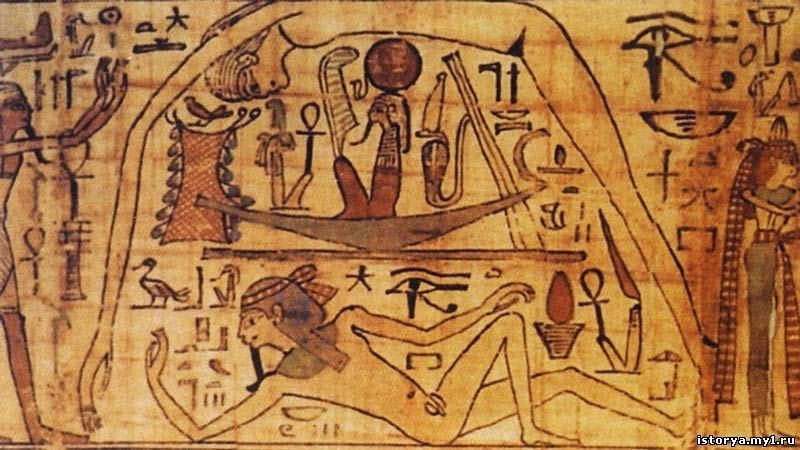
According to the ancient Egyptians, the Earth was seen below and the sky goddess was positioned above it. On the left and right sides, there was the ship of the Sun god, which represented the Sun’s journey from sunrise to sunset across the sky.
India
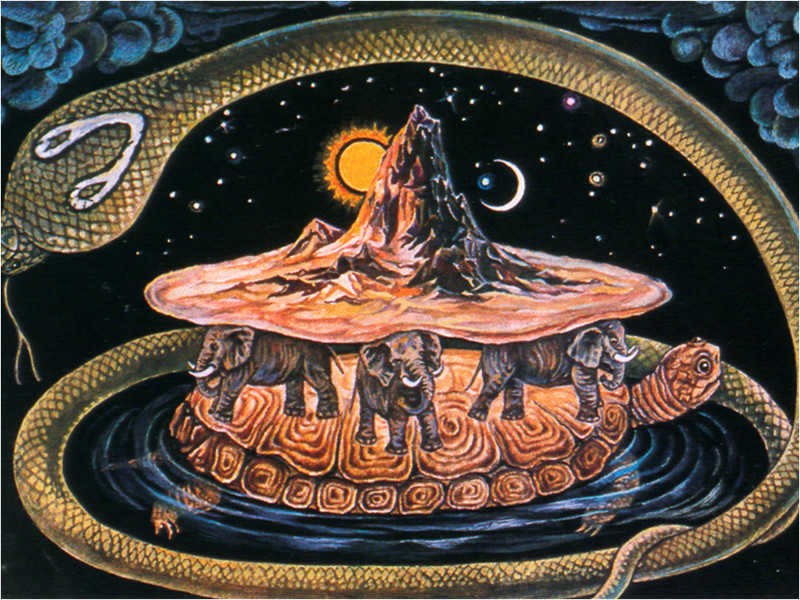
In ancient times, the people of India had a unique and imaginative concept of the Earth. According to their beliefs, the Earth took the form of a hemisphere that was supported by four majestic elephants. These elephants, in turn, stood upon a massive turtle that gracefully swam in a sea of milky white. Surrounding this extraordinary scene was the formidable black cobra known as Sheshu, with its countless heads holding up the entire universe.
Babylon. Current-day Iraq. In that region.
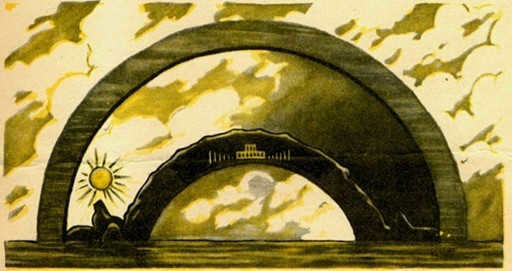
Ancient Greeks.

Aristotle, the renowned ancient Greek scientist from the 4th century BC, was the first to utilize observations of lunar eclipses as evidence for the Earth’s spherical shape. Interestingly, this theory was also proposed by Pythagoras of Samos in the 6th century BC.
* The shadow cast by the Earth onto the full Moon during eclipses always appears round. Despite the Earth being turned towards the Moon from different angles during eclipses, only a spherical object can produce a round shadow.
** When ships sail away from an observer at sea, they do not gradually disappear from sight due to distance, but rather seem to instantaneously “sink” behind the horizon line.
*** Certain stars can only be seen from specific parts of the Earth, while other observers are never able to view them.
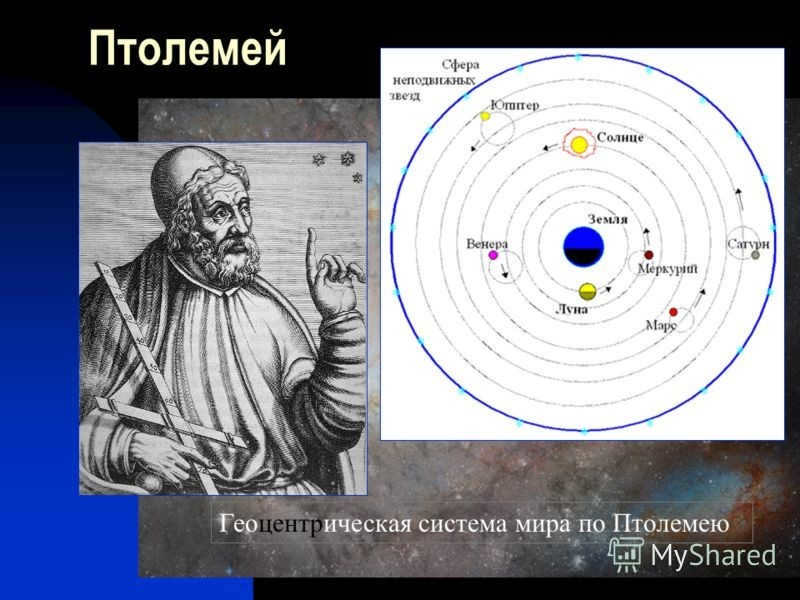
Claudius Ptolemy, a Greek astronomer, mathematician, optician, music theorist, and geographer, lived in Alexandria from 127 to 151 AD. During his time there, he conducted astronomical observations and continued the teachings of Aristotle regarding the Earth’s sphericity.
Ptolemy developed a geocentric system of the universe, which proposed that all celestial bodies orbit the Earth in empty space. This system was later embraced by the Christian Church.

Ultimately, Aristarchus of Samos, a renowned astronomer from the ancient era (late 4th – first half of the 3rd century BC. A.D.), proposed the revolutionary idea that it was not the Earth that was at the center of celestial motion, but rather the Sun, with the Earth and all the planets orbiting around it. Unfortunately, his theory lacked substantial evidence to support it.
Consequently, it would take approximately 1700 years before the Polish scientist Copernicus could provide the necessary proof.
Copernicus
Copernicus was a Renaissance-era mathematician and astronomer who formulated a heliocentric model of the universe. This model placed the Sun at the center of the solar system, with the planets orbiting around it. Copernicus’ theory challenged the prevailing geocentric model, which held that the Earth was the center of the universe. His work was groundbreaking and laid the foundation for modern astronomy.
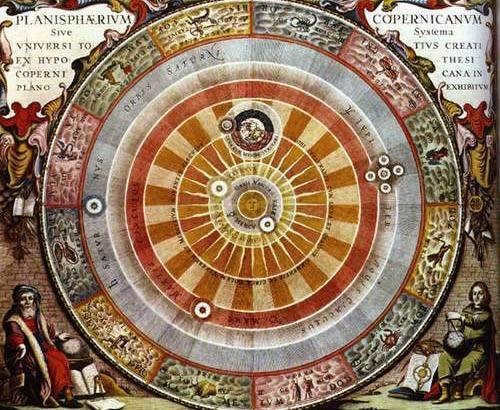
Italian. Galileo Galilei, also known as Galileo di Vincenzo Bonaiuti de Galilei.

He invents his own version of a trumpet and dubs it a telescope! Interestingly enough, he got the idea from the Dutch. Unfortunately for them, it seems that the invention didn’t help them much, unlike Vincenzo, or maybe they just didn’t have enough brains for it)
Through careful measurements and calculations, Galileo’s telescope turns out to be incredibly accurate (for that time period) and enables him to make numerous discoveries.
One of the earliest discoveries made by Galileo was a thorough examination of the moon’s surface. He not only proved the existence of mountains on the moon, but also provided a detailed description of them.
The fourth most important finding was the identification of Jupiter’s four satellites.
Through his observations, Galileo provided clear evidence that any celestial body can revolve around other celestial bodies, not just the Earth. The renowned astronomer meticulously studied and documented sunspots, a phenomenon that had been observed by others but had not been accurately described until Galileo Galilei did so.

In addition to studying the Moon, Galileo also brought to light the various phases of the planet Venus. In his writings, he drew comparisons between the phases of Venus and those of the Moon. These significant and profound observations ultimately led to the realization that the Earth, along with the other planets in our galaxy, orbits around the Sun.
Galileo meticulously documented all of his observations and discoveries in a scientific publication titled The Starry Messenger. As word of these breakthroughs spread, monarchs throughout Europe clamored to acquire telescopes. Galileo himself generously gifted several of his inventions to his patrons.





